AMD Ryzen 5 2600 vs Intel Core i3-8100: What is the difference?
53points
AMD Ryzen 5 2600
53points
Intel Core i3-8100
vs
64 facts in comparison
AMD Ryzen 5 2600
Intel Core i3-8100
Why is AMD Ryzen 5 2600 better than Intel Core i3-8100?
- 41.67% faster CPU speed?
6 x 3.4GHzvs4 x 3.6GHz - 533MHz higher ram speed?
2933MHzvs2400MHz - 8 more CPU threads?
12vs4 - 2nm smaller semiconductor size?
12nmvs14nm - 2MB bigger L2 cache?
3MBvs1MB - 1.61x higher PassMark result?
13207vs8183 - 10MB bigger L3 cache?
16MBvs6MB - 320KB bigger L1 cache?
576KBvs256KB
Why is Intel Core i3-8100 better than AMD Ryzen 5 2600?
- 5°C higher maximum operating temperature?
100°Cvs95°C - Has integrated graphics?
Which are the most popular comparisons?
AMD Ryzen 5 2600
vs
AMD Ryzen 5 5600X
Intel Core i3-8100
vs
Intel Core i5-6500
AMD Ryzen 5 2600
vs
AMD Ryzen 5 3600
Intel Core i3-8100
vs
Intel Core M3-8100Y
AMD Ryzen 5 2600
vs
AMD Ryzen 5 5600G
Intel Core i3-8100
vs
Intel Core i3-8100T
AMD Ryzen 5 2600
vs
Intel Core i3-12100
Intel Core i3-8100
vs
Intel Pentium Gold G5400
AMD Ryzen 5 2600
vs
AMD Ryzen 7 2700
Intel Core i3-8100
vs
Intel Core i5-7500
AMD Ryzen 5 2600
vs
AMD Ryzen 5 5500U
Intel Core i3-8100
vs
Intel Celeron 6305
AMD Ryzen 5 2600
vs
AMD Ryzen 7 3700X
Intel Core i3-8100
vs
Intel Core i7-4770
AMD Ryzen 5 2600
vs
AMD Ryzen 9 3900X
Intel Core i3-8100
vs
Intel Core i7-3770
AMD Ryzen 5 2600
vs
AMD Ryzen 5 4500U
Intel Core i3-8100
vs
Intel Core i7-6700
AMD Ryzen 5 2600
vs
Intel Core i5-9400F
Intel Core i3-8100
vs
Intel Core i3-10100
Price comparison
Cheap alternatives
User reviews
Overall Rating
AMD Ryzen 5 2600
4 User reviews
AMD Ryzen 5 2600
10. 0/10
4 User reviews
Intel Core i3-8100
0 User reviews
Intel Core i3-8100
0.0/10
0 User reviews
Features
Value for money
10.0/10
4 votes
No reviews yet
Gaming
10.0/10
4 votes
No reviews yet
Performance
10.0/10
4 votes
No reviews yet
Reliability
10.0/10
4 votes
No reviews yet
Energy efficiency
10.0/10
4 votes
No reviews yet
Performance
1.CPU speed
6 x 3.4GHz
4 x 3.6GHz
The CPU speed indicates how many processing cycles per second can be executed by a CPU, considering all of its cores (processing units). It is calculated by adding the clock rates of each core or, in the case of multi-core processors employing different microarchitectures, of each group of cores.
2. CPU threads
CPU threads
More threads result in faster performance and better multitasking.
3.turbo clock speed
3.9GHz
Unknown. Help us by suggesting a value. (Intel Core i3-8100)
When the CPU is running below its limitations, it can boost to a higher clock speed in order to give increased performance.
4.Has an unlocked multiplier
✔AMD Ryzen 5 2600
✖Intel Core i3-8100
Some processors come with an unlocked multiplier which makes them easy to overclock, allowing you to gain increased performance in games and other apps.
5.L2 cache
A larger L2 cache results in faster CPU and system-wide performance.
6.L3 cache
A larger L3 cache results in faster CPU and system-wide performance.
7.L1 cache
A larger L1 cache results in faster CPU and system-wide performance.
8. L2 core
L2 core
0.5MB/core
0.25MB/core
More data can be stored in the L2 cache for access by each core of the CPU.
9.L3 core
2.67MB/core
1.5MB/core
More data can be stored in the L3 cache for access by each core of the CPU.
Memory
1.RAM speed
2933MHz
2400MHz
It can support faster memory, which will give quicker system performance.
2.maximum memory bandwidth
43.71GB/s
38.4GB/s
This is the maximum rate that data can be read from or stored into memory.
3.DDR memory version
DDR (Double Data Rate) memory is the most common type of RAM. Newer versions of DDR memory support higher maximum speeds and are more energy-efficient.
4.memory channels
More memory channels increases the speed of data transfer between the memory and the CPU.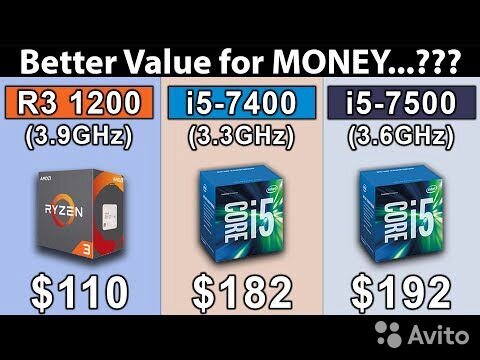
5.maximum memory amount
The maximum amount of memory (RAM) supported.
6.bus transfer rate
Unknown. Help us by suggesting a value. (AMD Ryzen 5 2600)
The bus is responsible for transferring data between different components of a computer or device.
7.Supports ECC memory
✔AMD Ryzen 5 2600
✔Intel Core i3-8100
Error-correcting code memory can detect and correct data corruption. It is used when is it essential to avoid corruption, such as scientific computing or when running a server.
8.eMMC version
Unknown. Help us by suggesting a value. (AMD Ryzen 5 2600)
Unknown. Help us by suggesting a value. (Intel Core i3-8100)
A higher version of eMMC allows faster memory interfaces, having a positive effect on the performance of a device. For example, when transferring files from your computer to the internal storage over USB.
9.bus speed
Unknown. Help us by suggesting a value. (AMD Ryzen 5 2600)
Unknown. Help us by suggesting a value. (Intel Core i3-8100)
The bus is responsible for transferring data between different components of a computer or device.
Benchmarks
1.PassMark result
This benchmark measures the performance of the CPU using multiple threads.
2.PassMark result (single)
This benchmark measures the performance of the CPU using a single thread.
3.Geekbench 5 result (multi)
Geekbench 5 is a cross-platform benchmark that measures a processor’s multi-core performance. (Source: Primate Labs, 2022)
4.Cinebench R20 (multi) result
Unknown. Help us by suggesting a value. (Intel Core i3-8100)
Cinebench R20 is a benchmark tool that measures a CPU’s multi-core performance by rendering a 3D scene.
5.Cinebench R20 (single) result
Unknown. Help us by suggesting a value. (Intel Core i3-8100)
Cinebench R20 is a benchmark tool that measures a CPU’s single-core performance by rendering a 3D scene.
6.Geekbench 5 result (single)
Geekbench 5 is a cross-platform benchmark that measures a processor’s single-core performance. (Source: Primate Labs, 2022)
7.Blender (bmw27) result
295.1seconds
Unknown. Help us by suggesting a value. (Intel Core i3-8100)
The Blender (bmw27) benchmark measures the performance of a processor by rendering a 3D scene. More powerful processors can render the scene in less time.
8.Blender (classroom) result
Unknown. Help us by suggesting a value. (AMD Ryzen 5 2600)
Unknown. Help us by suggesting a value. (Intel Core i3-8100)
The Blender (classroom) benchmark measures the performance of a processor by rendering a 3D scene. More powerful processors can render the scene in less time.
More powerful processors can render the scene in less time.
9.performance per watt
Unknown. Help us by suggesting a value. (Intel Core i3-8100)
This means the CPU is more efficient, giving a greater amount of performance for each watt of power used.
Features
1.uses multithreading
✔AMD Ryzen 5 2600
✖Intel Core i3-8100
Multithreading technology (such as Intel’s Hyperthreading or AMD’s Simultaneous Multithreading) provides increased performance by splitting each of the processor’s physical cores into virtual cores, also known as threads. This way, each core can run two instruction streams at once.
2.Has AES
✔AMD Ryzen 5 2600
✔Intel Core i3-8100
AES is used to speed up encryption and decryption.
3.Has AVX
✔AMD Ryzen 5 2600
✔Intel Core i3-8100
AVX is used to help speed up calculations in multimedia, scientific and financial apps, as well as improving Linux RAID software performance.
4.SSE version
SSE is used to speed up multimedia tasks such as editing an image or adjusting audio volume. Each new version contains new instructions and improvements.
5.Has F16C
✔AMD Ryzen 5 2600
✔Intel Core i3-8100
F16C is used to speed up tasks such as adjusting the contrast of an image or adjusting volume.
6.bits executed at a time
Unknown. Help us by suggesting a value. (AMD Ryzen 5 2600)
Unknown. Help us by suggesting a value. (Intel Core i3-8100)
NEON provides acceleration for media processing, such as listening to MP3s.
7.Has MMX
✔AMD Ryzen 5 2600
✔Intel Core i3-8100
MMX is used to speed up tasks such as adjusting the contrast of an image or adjusting volume.
8.Has TrustZone
✖AMD Ryzen 5 2600
✖Intel Core i3-8100
A technology integrated into the processor to secure the device for use with features such as mobile payments and streaming video using digital rights management (DRM).
9.front-end width
Unknown. Help us by suggesting a value. (AMD Ryzen 5 2600)
Unknown. Help us by suggesting a value. (Intel Core i3-8100)
The CPU can decode more instructions per clock (IPC), meaning that the CPU performs better
Price comparison
Cancel
Which are the best CPUs?
Intel Core i3 8100 vs AMD Ryzen 5 2600: performance comparison
VS
Intel Core i3 8100
AMD Ryzen 5 2600
We compared two desktop CPUs: the 3.6 GHz Intel Core i3 8100 with 4-cores against the 3.4 GHz AMD Ryzen 5 2600 with 6-cores. On this page, you’ll find out which processor has better performance in benchmarks, games and other useful information.
- Review
- Differences
- Performance
- Specs
- Comments
Review
General overview and comparison of the processors
Single-Core Performance
Performance in single-threaded apps and benchmarks
Core i3 8100
51
Ryzen 5 2600
54
Performance
Measure performance when all cores are involved
Core i3 8100
18
Ryzen 5 2600
35
Power Efficiency
The efficiency score of electricity consumption
Core i3 8100
44
Ryzen 5 2600
50
NanoReview Final Score
Generic CPU rating
Core i3 8100
37
Ryzen 5 2600
47
Key Differences
What are the key differences between 2600 and 8100
Advantages of Intel Core i3 8100
- Includes an integrated GPU Intel UHD Graphics 630
Advantages of AMD Ryzen 5 2600
- Has 10 MB larger L3 cache size
- Unlocked multiplier
- Has 2 more physical cores
- Newer — released 1-year later
- More modern manufacturing process – 12 versus 14 nanometers
- Around 6.
 21 GB/s (17%) higher theoretical memory bandwidth
21 GB/s (17%) higher theoretical memory bandwidth
Benchmarks
Comparing the performance of CPUs in benchmarks
Cinebench R23 (Single-Core)
Core i3 8100
927
Ryzen 5 2600
+9%
1008
Cinebench R23 (Multi-Core)
Core i3 8100
3571
Ryzen 5 2600
+97%
7024
Passmark CPU (Single-Core)
Core i3 8100
2222
Ryzen 5 2600
2229
Passmark CPU (Multi-Core)
Core i3 8100
6129
Ryzen 5 2600
+115%
13155
Geekbench 5 (Single-Core)
Core i3 8100
946
Ryzen 5 2600
+9%
1033
Geekbench 5 (Multi-Core)
Core i3 8100
3314
Ryzen 5 2600
+69%
5596
▶️ Submit your Cinebench R23 result
By purchasing through links on this site, we may receive a commission from Amazon. This does not affect our assessment methodology.
Specifications
Full technical specification of Intel Core i3 8100 and AMD Ryzen 5 2600
General
| Vendor | Intel | AMD |
| Released | October 5, 2017 | September 11, 2018 |
| Type | Desktop | Desktop |
| instruction set | x86-64 | x86-64 |
| Codename | Coffee Lake | Zen+ |
| Model number | i3-8100 | — |
| Socket | LGA-1151 | AM4 |
| Integrated GPU | UHD Graphics 630 | No |
Performance
| Cores | 4 | 6 |
| Threads | 4 | 12 |
| Base Frequency | 3. 6 GHz 6 GHz |
3.4 GHz |
| Turbo Boost Frequency | — | 3.9 GHz |
| Bus frequency | 100 MHz | 100 MHz |
| Multiplier | 28x | 34x |
| Bus Bandwidth | 8 GT/s | — |
| L1 Cache | 64K (per core) | 96K (per core) |
| L2 Cache | 256K (per core) | 512K (per core) |
| L3 Cache | 6MB (shared) | 16MB (shared) |
| Unlocked Multiplier | No | Yes |
| Transistors | — | 4.8 billions |
| Fabrication process | 14 nm | 12 nm |
| TDP | 65 W | 65 W |
Max. temperature temperature |
100°C | 95°C |
| Integrated Graphics | Intel UHD Graphics 630 | — |
| GPU Base Clock | 350 MHz | — |
| GPU Boost Clock | 1100 MHz | — |
| Shading Units | 192 | — |
| TMUs | 24 | — |
| ROPs | 3 | — |
| Execution Units | 24 | — |
| TGP | 15 W | — |
| Max. Resolution | 4096×2304 — 60 Hz | — |
iGPU FLOPS
Core i3 8100
0.38 TFLOPS
Ryzen 5 2600
n/a
Memory support
| Memory types | DDR4-2400 | DDR4-2933 |
| Memory Size | 64 GB | 64 GB |
Max. Memory Channels Memory Channels |
2 | 2 |
| Max. Memory Bandwidth | 37.5 GB/s | 43.71 GB/s |
| ECC Support | Yes | Yes |
| Official site | Intel Core i3 8100 official page | AMD Ryzen 5 2600 official page |
| PCI Express Version | 3.0 | 3.0 |
| PCI Express Lanes | 16 | 20 |
| Extended instructions | SSE4.1, SSE4.2, AVX-2 | — |
Cast your vote
Choose between two processors
Core i3 8100
14 (35%)
Ryzen 5 2600
26 (65%)
Total votes: 40
ompetitors
1.
AMD Ryzen 5 2600 and AMD Ryzen 5 3600
2.
AMD Ryzen 5 2600 and AMD Ryzen 5 5600X
3.
AMD Ryzen 5 2600 and AMD Ryzen 5 5600G
4.
AMD Ryzen 5 2600 and Intel Core i5 10400F
5.
AMD Ryzen 5 2600 and AMD Ryzen 5 3600XT
6.
AMD Ryzen 5 2600 and AMD Ryzen 5 Pro 4650G
Intel Core i3-8100 vs AMD Ryzen 5 2600
|
|
|
|
|
Intel Core i3-8100 vs AMD Ryzen 5 2600
Comparison of the technical characteristics between the processors, with the Intel Core i3-8100 on one side and the AMD Ryzen 5 2600 on the other side. The first is dedicated to the desktop sector, It has 4 cores, 4 threads, a maximum frequency of 3,6GHz. The second is used on the desktop segment, it has a total of 6 cores, 12 threads, its turbo frequency is set to 3,9 GHz.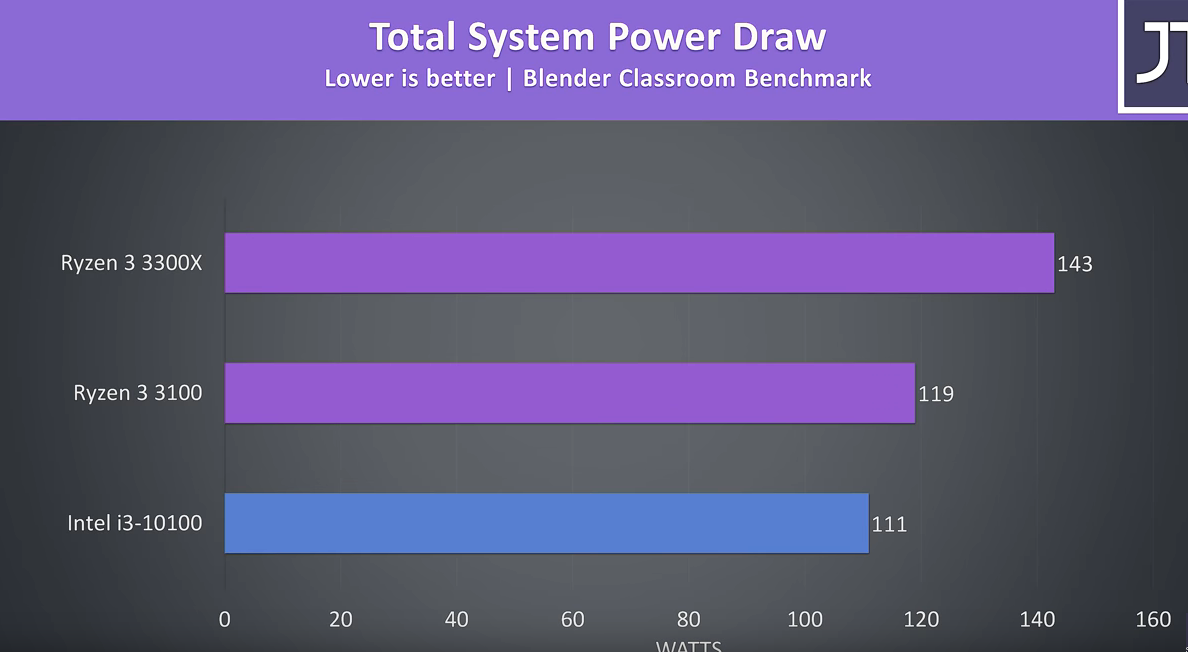 The following table also compares the lithography, the number of transistors (if indicated), the amount of cache memory, the maximum RAM memory capacity, the type of memory accepted, the release date, the maximum number of PCIe lanes, the values obtained in Geekbench 4 and Cinebench R15.
The following table also compares the lithography, the number of transistors (if indicated), the amount of cache memory, the maximum RAM memory capacity, the type of memory accepted, the release date, the maximum number of PCIe lanes, the values obtained in Geekbench 4 and Cinebench R15.
Note: Commissions may be earned from the links above.
This page contains references to products from one or more of our advertisers. We may receive compensation when you click on links to those products. For an explanation of our advertising policy, please visit this page.
Specifications:
| Processor | Intel Core i3-8100 | AMD Ryzen 5 2600 | ||||||
| Market (main) | Desktop | Desktop | ||||||
| ISA | x86-64 (64 bit) | x86-64 (64 bit) | ||||||
| Microarchitecture | Coffee Lake | Zen+ | ||||||
| Core name | Coffee Lake-S | Pinnacle Ridge | ||||||
| Family | Core i3-8000 | Ryzen 5 2000 | ||||||
| Part number(s), S-Spec | BX80684I38100, BXC80684I38100, CM8068403377308, SR3N5 |
YD2600BBM6IAF | ||||||
| Release date | Q4 2017 | Q2 2018 | ||||||
| Lithography | 14 nm++ | 12 nm | ||||||
| Transistors | — | 4. 800.000.000 800.000.000 |
||||||
| Cores | 4 | 6 | ||||||
| Threads | 4 | 12 | ||||||
| Base frequency | 3,6 GHz | 3,4 GHz | ||||||
| Turbo frequency | — | 3,9 GHz | ||||||
| Cache memory | 6 MB | 16 MB | ||||||
| Max memory capacity | 64 GB | 64 GB | ||||||
| Memory types | DDR4-2400 | DDR4-2933 | ||||||
| Max # of memory channels | 2 | 2 | ||||||
| Max memory bandwidth | 37,5 GB/s | 43,71 GB/s | ||||||
| Max PCIe lanes | 16 | 20 | ||||||
| TDP | 65 W | 65 W | ||||||
| Suggested PSU | 600W ATX Power Supply | 600W ATX Power Supply | ||||||
| GPU integrated graphics | Intel UHD Graphics 630 (Coffee Lake) | None | ||||||
| GPU execution units | 23 | — | ||||||
| GPU shading units | 184 | — | ||||||
| GPU base clock | 350 MHz | — | ||||||
| GPU boost clock | 1100 MHz | — | ||||||
| GPU FP32 floating point | 423,2 GFLOPS | — | ||||||
| Socket | LGA1151 | AM4, PGA-1331 | ||||||
| Compatible motherboard | Socket LGA 1151 Motherboard | Socket AM4 Motherboard | ||||||
| Maximum temperature | 100°C | 95°C | ||||||
| CPU-Z single thread | 422 | 438 | ||||||
| CPU-Z multi thread | 1. 654 654 |
3.542 | ||||||
| Cinebench R15 single thread | 154 | 161 | ||||||
| Cinebench R15 multi-thread | 616 | 1.384 | ||||||
| Cinebench R23 single thread | 707 | 1.022 | ||||||
| Cinebench R23 multi-thread | 2.745 | 8.126 | ||||||
| PassMark single thread | 2.231 | 2.243 | ||||||
| PassMark CPU Mark | 6.120 | 13.215 | ||||||
| (Windows 64-bit) Geekbench 4 single core |
4.327 | 4.441 | ||||||
| (Windows 64-bit) Geekbench 4 multi-core |
12. 377 377 |
20.954 | ||||||
| (SGEMM) GFLOPS performance |
225,6 GFLOPS | 267,1 GFLOPS | ||||||
| (Multi-core / watt performance) Performance / watt ratio |
190 pts / W | 322 pts / W | ||||||
| Amazon | ||||||||
| eBay |
Note: Commissions may be earned from the links above.
We can better compare what are the technical differences between the two processors.
Suggested PSU: We assume that we have An ATX computer case, a high end graphics card, 16GB RAM, a 512GB SSD, a 1TB HDD hard drive, a Blu-Ray drive. We will have to rely on a more powerful power supply if we want to have several graphics cards, several monitors, more memory, etc.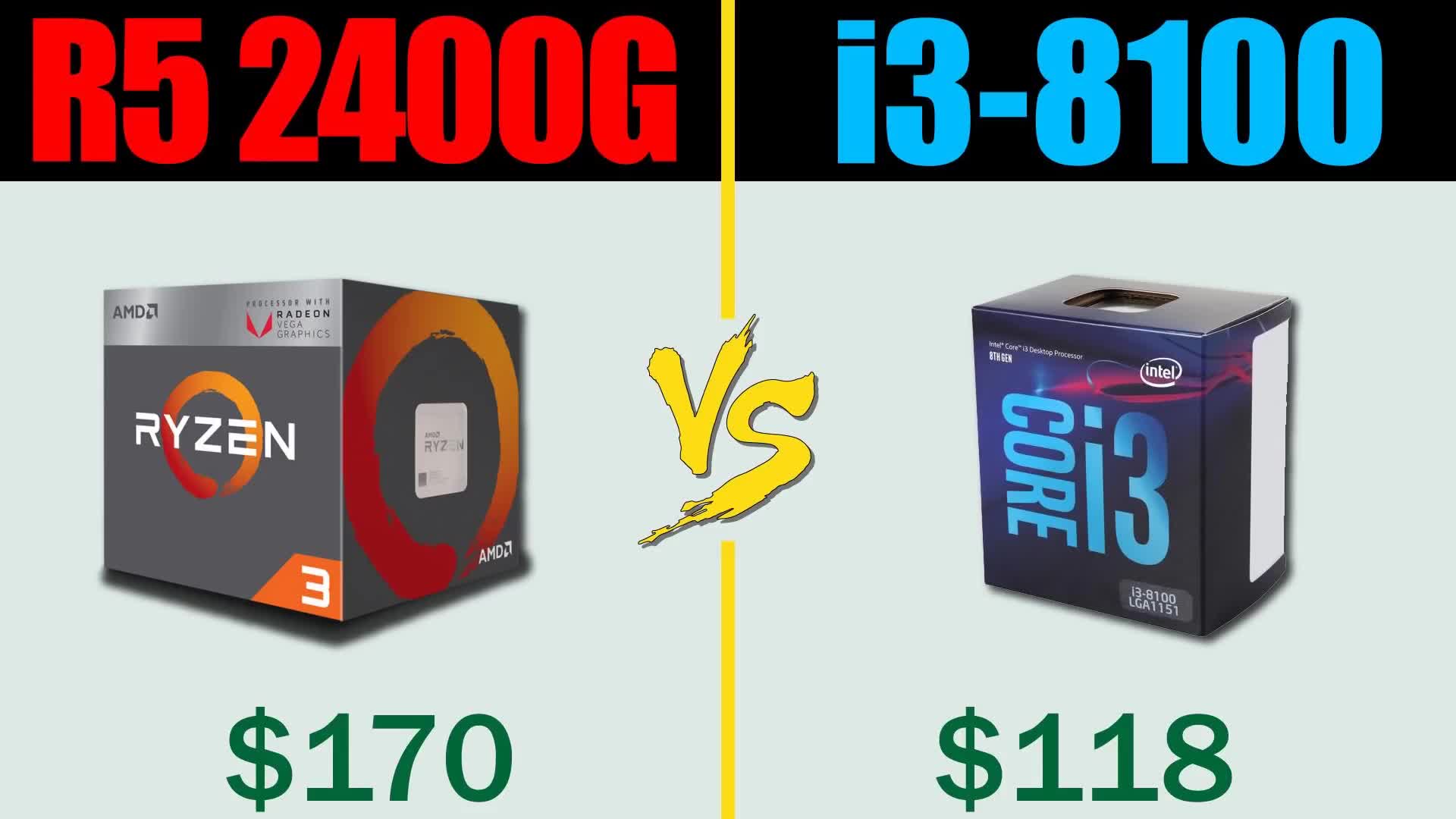
Price: For technical reasons, we cannot currently display a price less than 24 hours, or a real-time price. This is why we prefer for the moment not to show a price. You should refer to the respective online stores for the latest price, as well as availability.
The processor AMD Ryzen 5 2600 has a larger number of cores, the turbo frequency of AMD Ryzen 5 2600 is bigger, that their respective TDP are of the same order. The AMD Ryzen 5 2600 was started more recently.
Performances :
Performance comparison between the two processors, for this we consider the results generated on benchmark software such as Geekbench 4.
| CPU-Z — Multi-thread & single thread score | |
|---|---|
| AMD Ryzen 5 2600 |
438 3.542 |
| Intel Core i3-8100 |
422 1.654 |
In single core, the difference is 4%. In multi-core, the difference in terms of gap is 114%.
In multi-core, the difference in terms of gap is 114%.
Note: Commissions may be earned from the links above. These scores are only an
average of the performances got with these processors, you may get different results.
CPU-Z is a system information software that provides the name of the processor, its model number, the codename, the cache levels, the package, the process. It can also gives data about the mainboard, the memory. It makes real time measurement, with finally a benchmark for the single thread, as well as for the multi thread.
| Cinebench R15 — Multi-thread & single thread score | |
|---|---|
| AMD Ryzen 5 2600 |
161 1.384 |
| Intel Core i3-8100 |
154 616 |
In single core, the difference is 5%. In multi-core, the difference in terms of gap is 125%.
Note: Commissions may be earned from the links above. These scores are only an
average of the performances got with these processors, you may get different results.
Cinebench R15 evaluates the performance of CPU calculations by restoring a photorealistic 3D scene. The scene has 2,000 objects, 300,000 polygons, uses sharp and fuzzy reflections, bright areas, shadows, procedural shaders, antialiasing, and so on. The faster the rendering of the scene is created, the more powerful the PC is, with a high number of points.
| Cinebench R23 — Multi-thread & single thread score | |
|---|---|
| AMD Ryzen 5 2600 |
1.022 8.126 |
| Intel Core i3-8100 |
707 2.745 |
In single core, the difference is 45%. In multi-core, the difference in terms of gap is 196%.
Note: Commissions may be earned from the links above. These scores are only an
average of the performances got with these processors, you may get different results.
Cinebench R23 is cross-platform testing software that allows you to assess the hardware capabilities of a device such as a computer, tablet, server. This version of Cinebench takes into account recent developments in processors with multiple cores and the latest improvements in rendering techniques. The evaluation is ultimately even more relevant. The test scene contains no less than 2,000 objects and more than 300,000 polygons in total.
| PassMark — CPU Mark & single thread | |
|---|---|
| AMD Ryzen 5 2600 |
2.243 13.215 |
| Intel Core i3-8100 |
2.231 6.120 |
In single core, the difference is 1%. In multi-core, the difference in terms of gap is 116%.
In multi-core, the difference in terms of gap is 116%.
Note: Commissions may be earned from the links above. These scores are only an
average of the performances got with these processors, you may get different results.
PassMark is a benchmarking software that performs several performance tests including prime numbers, integers, floating point, compression, physics, extended instructions, encoding, sorting. The higher the score is, the higher is the device capacity.
On Windows 64-bit:
| Geekbench 4 — Multi-core & single core score — Windows 64-bit | |
|---|---|
| AMD Ryzen 5 2600 |
4.441 20.954 |
| Intel Core i3-8100 |
4.327 12.377 |
In single core, the difference is 3%. In multi-core, the difference in terms of gap is 69%.
On Linux 64-bit:
| Geekbench 4 — Multi-core & single core score — Linux 64-bit | |
|---|---|
| AMD Ryzen 5 2600 |
4.570 20.707 |
| Intel Core i3-8100 |
4.665 12.104 |
In single core, the difference is 2%. In multi-core, the difference in terms of gap is 71%.
On Android 64-bit:
| Geekbench 4 — Multi-core & single core score — Android 64-bit | |
|---|---|
| AMD Ryzen 5 2600 |
4.361 13.960 |
| Intel Core i3-8100 |
3.131 7.065 |
In single core, the difference is 39%. In multi-core, the difference in terms of gap is 98%.
On Mac OS X 64-bit:
| Geekbench 4 — Multi-core & single core score — Mac OS X 64-bit | |
|---|---|
| AMD Ryzen 5 2600 |
4. 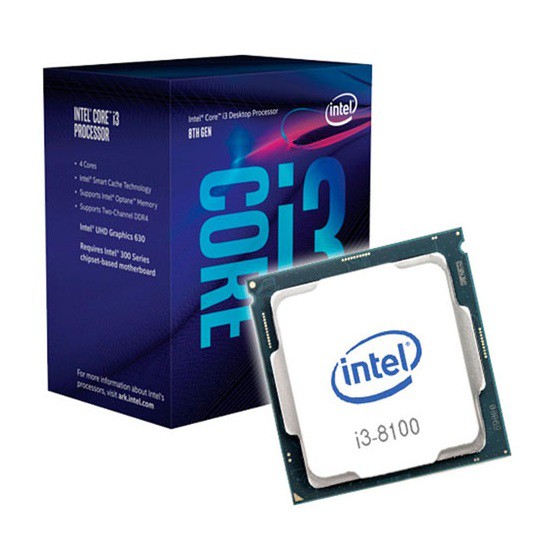 213 21319.017 |
| Intel Core i3-8100 |
4.480 13.074 |
In single core, the difference is 6%. In multi-core, the difference in terms of gap is 45%.
Note: Commissions may be earned from the links above. These scores are only an
average of the performances got with these processors, you may get different results.
Geekbench 4 is a complete benchmark platform with several types of tests, including data compression, images, AES encryption, SQL encoding, HTML, PDF file rendering, matrix computation, Fast Fourier Transform, 3D object simulation, photo editing, memory testing. This allows us to better visualize the respective power of these devices. For each result, we took an average of 250 values on the famous benchmark software.
Equivalence:
Intel Core i3-8100 AMD equivalentAMD Ryzen 5 2600 Intel equivalent
See also:
Intel Core i3-8100BIntel Core i3-8100TIntel Core i3-8109U
AMD Ryzen 5 2600X
AMD Ryzen 5 2600 vs Intel Core i3-8100
Análisis comparativo de los procesadores AMD Ryzen 5 2600 y Intel Core i3-8100 para todas las características en las siguientes categorías: Esenciales, Desempeño, Memoria, Compatibilidad, Periféricos, Tecnologías avanzadas, Virtualización, Gráficos, Interfaces gráficas, Calidad de imagen de los gráficos, Soporte de APIs gráficas, Seguridad y fiabilidad.
Análisis de desempeño comparativo de procesadores: PassMark — Single thread mark, PassMark — CPU mark, Geekbench 4 — Single Core, Geekbench 4 — Multi-Core, 3DMark Fire Strike — Physics Score, CompuBench 1.5 Desktop — Ocean Surface Simulation (Frames/s), CompuBench 1.5 Desktop — T-Rex (Frames/s), CompuBench 1.5 Desktop — Face Detection (mPixels/s), CompuBench 1.5 Desktop — Video Composition (Frames/s), CompuBench 1.5 Desktop — Bitcoin Mining (mHash/s), GFXBench 4.0 — Car Chase Offscreen (Frames), GFXBench 4.0 — Manhattan (Frames), GFXBench 4.0 — T-Rex (Frames), GFXBench 4.0 — Car Chase Offscreen (Fps), GFXBench 4.0 — Manhattan (Fps), GFXBench 4.0 — T-Rex (Fps).
AMD Ryzen 5 2600
Comprar en Amazon
vs
Intel Core i3-8100
Comprar en Amazon
Diferencias
Razones para considerar el AMD Ryzen 5 2600
- El CPU es más nuevo: fue lanzado al mercado 3 mes(es) después
- El procesador está desbloqueado, un multiplicador desbloqueado permite un overclocking más fácil
- 2 más núcleos, ejecuta más aplicaciones a la vez: 6 vs 4
- 8 más subprocesos: 12 vs 4
- Una velocidad de reloj alrededor de 8% más alta: 3.
 9 GHz vs 3.6 GHz
9 GHz vs 3.6 GHz - Un proceso de manufactura más nuevo permite que un procesador sea más poderoso y trabaje a menor temperatura: 12 nm FinFET vs 14 nm
- 2.3 veces más caché L1, más datos pueden ser almacenados en el caché L1 para un acceso más rápido luego
- 3 veces más caché L2, más datos pueden ser almacenados en el caché L2 para un acceso más rápido luego
- 2.7 veces más caché L3, más datos pueden ser almacenados en el caché L3 para un acceso más rápido luego
- Alrededor de 1% mejor desempeño en PassMark — Single thread mark: 2251 vs 2237
- 2.1 veces mejor desempeño en PassMark — CPU mark: 13248 vs 6164
- Alrededor de 1% mejor desempeño en Geekbench 4 — Single Core: 974 vs 965
- Alrededor de 70% mejor desempeño en Geekbench 4 — Multi-Core: 5321 vs 3121
- Alrededor de 72% mejor desempeño en 3DMark Fire Strike — Physics Score: 5742 vs 3346
- Alrededor de 95% mejor desempeño en CompuBench 1.5 Desktop — T-Rex (Frames/s): 0.922 vs 0.
 473
473
| Fecha de lanzamiento | 19 April 2018 vs January 2018 |
| Desbloqueado | Desbloqueado vs Bloqueado |
| Número de núcleos | 6 vs 4 |
| Número de subprocesos | 12 vs 4 |
| Frecuencia máxima | 3.9 GHz vs 3.6 GHz |
| Tecnología de proceso de manufactura | 12 nm FinFET vs 14 nm |
| Caché L1 | 576 KB vs 64 KB (per core) |
| Caché L2 | 3 MB vs 256 KB (per core) |
| Caché L3 | 16 MB vs 6144 KB (shared) |
| PassMark — Single thread mark | 2251 vs 2237 |
| PassMark — CPU mark | 13248 vs 6164 |
| Geekbench 4 — Single Core | 974 vs 965 |
| Geekbench 4 — Multi-Core | 5321 vs 3121 |
| 3DMark Fire Strike — Physics Score | 5742 vs 3346 |
CompuBench 1. 5 Desktop — T-Rex (Frames/s) 5 Desktop — T-Rex (Frames/s) |
0.922 vs 0.473 |
Razones para considerar el Intel Core i3-8100
- Una temperatura de núcleo máxima 5% mayor: 100°C vs 95°C
- Alrededor de 87% mejor desempeño en CompuBench 1.5 Desktop — Ocean Surface Simulation (Frames/s): 87.079 vs 46.475
| Temperatura máxima del núcleo | 100°C vs 95°C |
| CompuBench 1.5 Desktop — Ocean Surface Simulation (Frames/s) | 87.079 vs 46.475 |
Comparar referencias
CPU 1: AMD Ryzen 5 2600
CPU 2: Intel Core i3-8100
| PassMark — Single thread mark |
|
|
||||
| PassMark — CPU mark |
|
|
||||
| Geekbench 4 — Single Core |
|
|
||||
| Geekbench 4 — Multi-Core |
|
|
||||
| 3DMark Fire Strike — Physics Score |
|
|
||||
CompuBench 1. 5 Desktop — Ocean Surface Simulation (Frames/s) 5 Desktop — Ocean Surface Simulation (Frames/s) |
|
|
||||
| CompuBench 1.5 Desktop — T-Rex (Frames/s) |
|
|
| Nombre | AMD Ryzen 5 2600 | Intel Core i3-8100 |
|---|---|---|
| PassMark — Single thread mark | 2251 | 2237 |
| PassMark — CPU mark | 13248 | 6164 |
| Geekbench 4 — Single Core | 974 | 965 |
| Geekbench 4 — Multi-Core | 5321 | 3121 |
| 3DMark Fire Strike — Physics Score | 5742 | 3346 |
CompuBench 1. 5 Desktop — Ocean Surface Simulation (Frames/s) 5 Desktop — Ocean Surface Simulation (Frames/s) |
46.475 | 87.079 |
| CompuBench 1.5 Desktop — T-Rex (Frames/s) | 0.922 | 0.473 |
| CompuBench 1.5 Desktop — Face Detection (mPixels/s) | 3.843 | |
| CompuBench 1.5 Desktop — Video Composition (Frames/s) | 2.403 | |
| CompuBench 1.5 Desktop — Bitcoin Mining (mHash/s) | 6.403 | |
| GFXBench 4.0 — Car Chase Offscreen (Frames) | 1830 | |
GFXBench 4. 0 — Manhattan (Frames) 0 — Manhattan (Frames) |
3671 | |
| GFXBench 4.0 — T-Rex (Frames) | 6116 | |
| GFXBench 4.0 — Car Chase Offscreen (Fps) | 1830 | |
| GFXBench 4.0 — Manhattan (Fps) | 3671 | |
| GFXBench 4.0 — T-Rex (Fps) | 6116 |
Comparar especificaciones
| AMD Ryzen 5 2600 | Intel Core i3-8100 | |
|---|---|---|
| Nombre clave de la arquitectura | Zen+ | Coffee Lake |
| Family | AMD Ryzen Processors | |
| Fecha de lanzamiento | 19 April 2018 | January 2018 |
| OPN PIB | YD2600BBAFBOX | |
| OS Support | Windows 10 — 64-Bit Edition, RHEL x86 64-Bit, Ubuntu x86 64-Bit | |
| Lugar en calificación por desempeño | 824 | 800 |
| Precio ahora | $159. 99 99 |
$129.99 |
| Series | AMD Ryzen 5 Desktop Processors | 8th Generation Intel® Core™ i3 Processors |
| Valor/costo (0-100) | 24.89 | 18.33 |
| Segmento vertical | Desktop | Desktop |
| Processor Number | i3-8100 | |
| Status | Launched | |
| Soporte de 64 bits | ||
| Base frequency | 3. 4 GHz 4 GHz |
3.60 GHz |
| Troquel | 213 mm | |
| Caché L1 | 576 KB | 64 KB (per core) |
| Caché L2 | 3 MB | 256 KB (per core) |
| Caché L3 | 16 MB | 6144 KB (shared) |
| Tecnología de proceso de manufactura | 12 nm FinFET | 14 nm |
| Temperatura máxima del núcleo | 95°C | 100°C |
| Frecuencia máxima | 3. 9 GHz 9 GHz |
3.6 GHz |
| Número de núcleos | 6 | 4 |
| Número de subprocesos | 12 | 4 |
| Número de transistores | 4940 Million | |
| Desbloqueado | ||
| Bus Speed | 8 GT/s DMI3 | |
| Temperatura máxima de la carcasa (TCase) | 72 °C | |
| Canales máximos de memoria | 2 | 2 |
| Supported memory frequency | 2933 MHz | |
| Tipos de memorias soportadas | DDR4 | DDR4-2400 |
| Máximo banda ancha de la memoria | 37. 5 GB/s 5 GB/s |
|
| Tamaño máximo de la memoria | 64 GB | |
| Número máximo de CPUs en la configuración | 1 | 1 |
| Zócalos soportados | AM4 | FCLGA1151 |
| Diseño energético térmico (TDP) | 65 Watt | 65 Watt |
| Thermal Solution | Wraith Stealth | PCG 2015C (65W) |
| Low Halogen Options Available | ||
| Package Size | 37.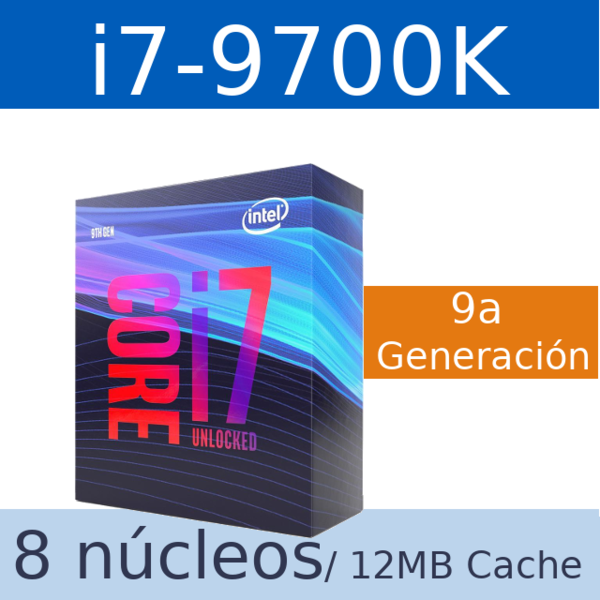 5mm x 37.5mm 5mm x 37.5mm |
|
| Clasificación PCI Express | 3.0 x16 | 3.0 |
| Número máximo de canales PCIe | 16 | |
| PCIe configurations | Up to 1×16, 2×8, 1×8+2×4 | |
| Scalability | 1S Only | |
| AMD Ryzen VR-Ready Premium | ||
| AMD SenseMI | ||
| AMD StoreMI technology | ||
| Intel® AES New Instructions | ||
| Tecnología Enhanced Intel SpeedStep® | ||
| Idle States | ||
| Instruction set extensions | Intel® SSE4.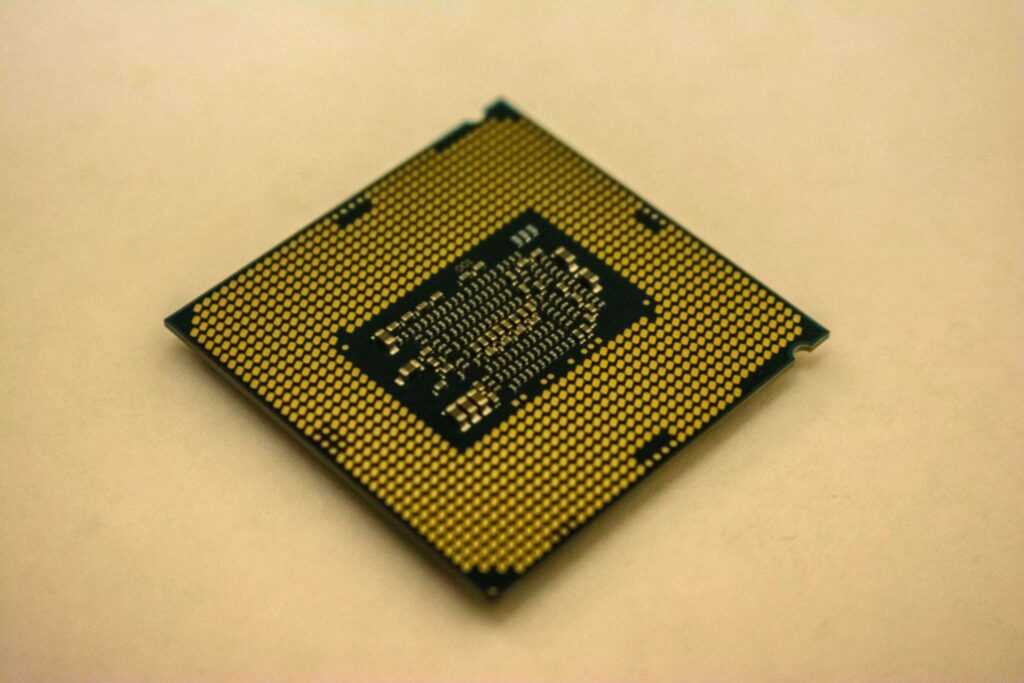 1, Intel® SSE4.2, Intel® AVX2 1, Intel® SSE4.2, Intel® AVX2 |
|
| Intel 64 | ||
| Intel® Advanced Vector Extensions (AVX) | ||
| Tecnología Intel® Hyper-Threading | ||
| Intel® Optane™ Memory Supported | ||
| Intel® Stable Image Platform Program (SIPP) | ||
| Intel® TSX-NI | ||
| Tecnología Intel® Turbo Boost | ||
| Intel® vPro™ Platform Eligibility | ||
| Thermal Monitoring | ||
| AMD Virtualization (AMD-V™) | ||
| Intel® Virtualization Technology (VT-x) | ||
| Intel® Virtualization Technology for Directed I/O (VT-d) | ||
| Intel® VT-x with Extended Page Tables (EPT) | ||
| Device ID | 0x3E91/x92 | |
| Graphics base frequency | 350 MHz | |
| Graphics max dynamic frequency | 1. 10 GHz 10 GHz |
|
| Tecnología Intel® Clear Video HD | ||
| Tecnología Intel® Clear Video | ||
| Tecnología Intel® InTru™ 3D | ||
| Intel® Quick Sync Video | ||
| Memoria de video máxima | 64 GB | |
| Procesador gráfico | Intel® UHD Graphics 630 | |
| Número de pantallas soportadas | 3 | |
| Soporte de resolución 4K | ||
| Máxima resolución por DisplayPort | [email protected] | |
| Máxima resolución por eDP | [email protected] | |
Máxima resolución por HDMI 1. 4 4 |
[email protected] | |
| DirectX | 12 | |
| OpenGL | 4.5 | |
| Execute Disable Bit (EDB) | ||
| Tecnología Intel® Identity Protection | ||
| Intel® Memory Protection Extensions (Intel® MPX) | ||
| Intel® OS Guard | ||
| Tecnología Intel® Secure Key | ||
| Intel® Software Guard Extensions (Intel® SGX) | ||
| Tecnología Intel® Trusted Execution (TXT) | ||
| Secure Boot |
i3-8100 so với Ryzen 5 2600 — Far Cry New Dawn với RX 570 So sánh hiệu suất
RX 570 with
Intel Core i3-8100 @ 3.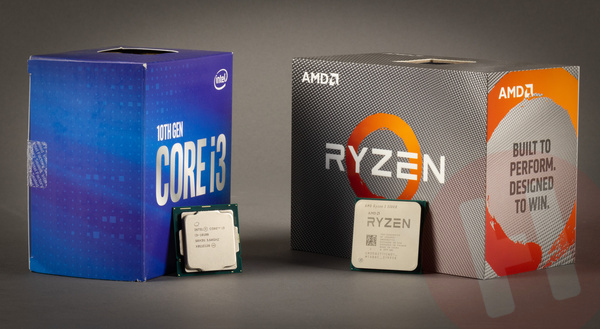 60GHz
60GHz
Far Cry New Dawn
RX 570 with
AMD Ryzen 5 2600
i3-8100
Ryzen 5 2600
Multi-Thread Performance
8094 Pts
13503 Pts
Single-Thread Performance
2102 Pts
2008 Pts
Far Cry New Dawn
i3-8100 vs Ryzen 5 2600 trong Far Cry New Dawn sử dụng RX 570 — CPU so sánh hiệu suất tại siêu, cao, trung bình, và thấp Cài đặt với độ phân giải 1080p, 1440p, độ phân giải 4K Chất lượng
i3-8100
Ryzen 5 2600
Chất lượng cực
| Giải quyết | Khung hình/giây |
|---|---|
| 1080p |
54.9 FPS |
| 1080p |
52.5 FPS |
| 1440p |
42.6 FPS |
| 1440p |
40.8 FPS |
| 2160p |
22.6 FPS |
| 2160p |
21.6 FPS |
| w1440p |
34.9 FPS |
| w1440p |
33. |
Chất lượng cao
| Giải quyết | Khung hình/giây |
|---|---|
| 1080p |
94.7 FPS |
| 1080p |
91.2 FPS |
| 1440p |
76.2 FPS |
| 1440p |
73.4 FPS |
| 2160p |
44.0 FPS |
| 2160p |
42.3 FPS |
| w1440p |
64.2 FPS |
| w1440p |
61.8 FPS |
Chất lượng trung bình
| Giải quyết | Khung hình/giây |
|---|---|
| 1080p |
134.6 FPS |
| 1080p |
129.9 FPS |
| 1440p |
109.8 FPS |
| 1440p |
106.1 FPS |
| 2160p |
65.4 FPS |
| 2160p |
63.0 FPS |
| w1440p |
93. |
| w1440p |
90.2 FPS |
Chất lượng thấp
| Giải quyết | Khung hình/giây |
|---|---|
| 1080p |
214.2 FPS |
| 1080p |
207.2 FPS |
| 1440p |
177.0 FPS |
| 1440p |
171.3 FPS |
| 2160p |
108.2 FPS |
| 2160p |
104.4 FPS |
| w1440p |
152.0 FPS |
| w1440p |
146.9 FPS |
i3-8100
Ryzen 5 2600
Compare i3-8100 vs Ryzen 5 2600 specifications
Chia sẻ ý kiến của bạn 2
Compare i3-8100 vs Ryzen 5 2600 in more games
Elden Ring
2022
God of War
2022
Overwatch 2
2022
Forza Horizon 5
2021
Halo Infinite
2021
Battlefield 2042
2021
Assassin’s Creed Valhalla
2020
Microsoft Flight Simulator
2020
Valorant
2020
Call of Duty: Black Ops Cold War
2020
Death Stranding
2020
Marvel’s Avengers
2020
Godfall
2020
Cyberpunk 2077
2020
Apex Legends
2019
Anthem
2019
Far Cry New Dawn
2019
Resident Evil 2
2019
Metro Exodus
2019
World War Z
2019
Gears of War 5
2019
F1 2019
2019
GreedFall
2019
Borderlands 3
2019
Call of Duty Modern Warfare
2019
Red Dead Redemption 2
2019
Need For Speed: Heat
2019
Assassin’s Creed Odyssey
2018
Battlefield V
2018
Call of Duty: Black Ops 4
2018
Final Fantasy XV
2018
Shadow of the Tomb Raider
2018
Forza Horizon 4
2018
Fallout 76
2018
Hitman 2
2018
Just Cause 4
2018
Monster Hunter: World
2018
Strange Brigade
2018
Assassin’s Creed Origins
2017
Dawn of War III
2017
Ghost Recon Wildlands
2017
Destiny 2
2017
PlayerUnknown’s Battlegrounds
2017
Fortnite Battle Royale
2017
Need For Speed: Payback
2017
For Honor
2017
Project CARS 2
2017
Forza Motorsport 7
2017
Ashes of the Singularity
2016
Ashes of the Singularity: Escalation
2016
Battlefield 1
2016
Deus Ex: Mankind Divided
2016
Doom
2016
F1 2016
2016
Hitman
2016
Rise of the Tomb Raider
2016
The Division
2016
Total War: Warhammer
2016
Overwatch
2016
Dishonored 2
2016
DiRT Rally
2015
Grand Theft Auto V
2015
The Witcher 3
2015
Rocket League
2015
Need For Speed
2015
Project CARS
2015
Rainbow Six Siege
2015
Battlefield 4
2013
Crysis 3
2013
Counter-Strike: Global Offensive
2012
League of Legends
2009
Minecraft
2009
Intel Core i3-8100 vs.
 AMD Ryzen 5 1600
AMD Ryzen 5 1600
Intel Core i3-8100
The Intel Core i3-8100 operates with 4 cores and 4 CPU threads. It run at No turbo base No turbo all cores while the TDP is set at 65 W.The processor is attached to the LGA 1151-2 CPU socket. This version includes 6.00 MB of L3 cache on one chip, supports 2 memory channels to support DDR4-2400 RAM and features 3.0 PCIe Gen 16 lanes. Tjunction keeps below 100 °C degrees C. In particular, Coffee Lake S Architecture is enhanced with 14 nm technology and supports VT-x, VT-x EPT, VT-d. The product was launched on Q4/2017
AMD Ryzen 5 1600
The AMD Ryzen 5 1600 operates with 6 cores and 4 CPU threads. It run at 3.60 GHz base 3.40 GHz all cores while the TDP is set at 65 W.The processor is attached to the AM4 CPU socket. This version includes 16.00 MB of L3 cache on one chip, supports 2 memory channels to support RAM and features 3.0 PCIe Gen 20 lanes. Tjunction keeps below 95 °C degrees C. In particular, Summit Ridge (Zen) Architecture is enhanced with 14 nm technology and supports AMD-V, SVM. The product was launched on Q1/2017
The product was launched on Q1/2017
Intel Core i3-8100
AMD Ryzen 5 1600
Compare Detail
| 3.60 GHz | Frequency | 3.20 GHz |
| 4 | Cores | 6 |
| No turbo | Turbo (1 Core) | 3.60 GHz |
| No turbo | Turbo (All Cores) | 3.40 GHz |
| No | Hyperthreading | Yes |
| No | Overclocking | Yes |
| normal | Core Architecture | normal |
|
Intel UHD Graphics 630 |
GPU | no iGPU |
| 1.10 GHz | GPU (Turbo) | No turbo |
| 14 nm | Technology | 14 nm |
| 1.10 GHz | GPU (Turbo) | No turbo |
| 12 | DirectX Version | |
| 3 | Max. displays | |
| DDR4-2400 | Memory | |
| 2 | Memory channels | 2 |
| Max memory | ||
| Yes | ECC | Yes |
| — | L2 Cache | — |
6.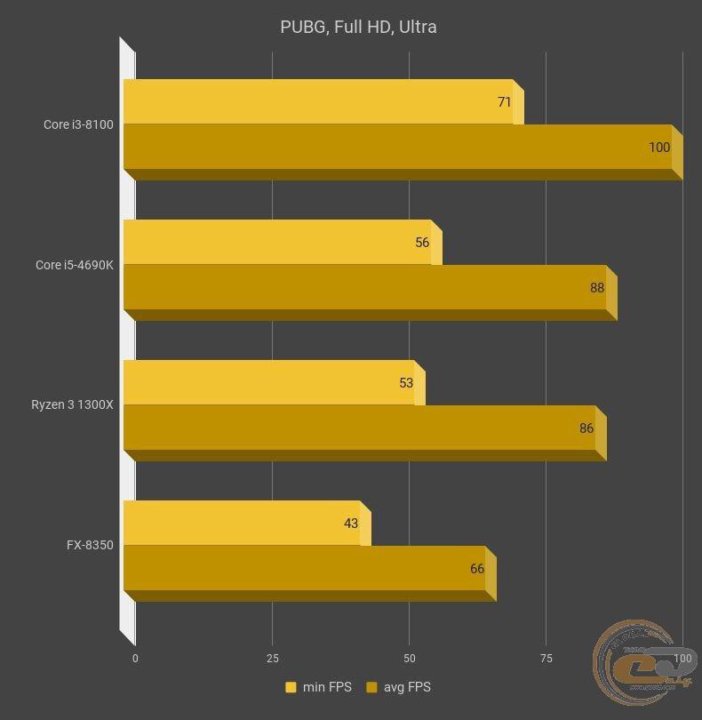 00 MB 00 MB |
L3 Cache | 16.00 MB |
| 3.0 | PCIe version | 3.0 |
| 16 | PCIe lanes | 20 |
| 14 nm | Technology | 14 nm |
| LGA 1151-2 | Socket | AM4 |
| 65 W | TDP | 65 W |
| VT-x, VT-x EPT, VT-d | Virtualization | AMD-V, SVM |
| Q4/2017 | Release date | Q1/2017 |
|
Show more data |
Show more data |
Cinebench R23 (Single-Core)
Cinebench R23 is the successor of Cinebench R20 and is also based on the Cinema 4 Suite. Cinema 4 is a worldwide used software to create 3D forms. The single-core test only uses one CPU core, the amount of cores or hyperthreading ability doesn’t count.
Cinebench R23 (Multi-Core)
Cinebench R23 is the successor of Cinebench R20 and is also based on the Cinema 4 Suite. Cinema 4 is a worldwide used software to create 3D forms. The multi-core test involves all CPU cores and taks a big advantage of hyperthreading.
The multi-core test involves all CPU cores and taks a big advantage of hyperthreading.
Cinebench R20 (Single-Core)
Cinebench R20 is the successor of Cinebench R15 and is also based on the Cinema 4 Suite. Cinema 4 is a worldwide used software to create 3D forms. The single-core test only uses one CPU core, the amount of cores or hyperthreading ability doesn’t count.
Cinebench R20 (Multi-Core)
Cinebench R20 is the successor of Cinebench R15 and is also based on the Cinema 4 Suite. Cinema 4 is a worldwide used software to create 3D forms. The multi-core test involves all CPU cores and taks a big advantage of hyperthreading.
Cinebench R15 (Single-Core)
Cinebench R15 is the successor of Cinebench 11.5 and is also based on the Cinema 4 Suite. Cinema 4 is a worldwide used software to create 3D forms. The single-core test only uses one CPU core, the amount of cores or hyperthreading ability doesn’t count.
Cinebench R15 (Multi-Core)
Cinebench R15 is the successor of Cinebench 11.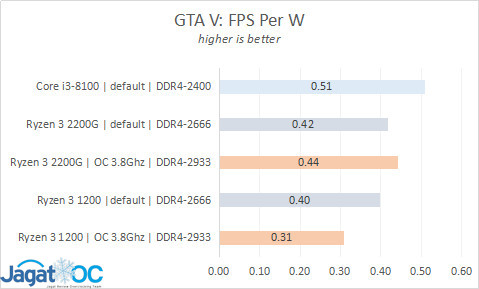 5 and is also based on the Cinema 4 Suite. Cinema 4 is a worldwide used software to create 3D forms. The multi-core test involves all CPU cores and taks a big advantage of hyperthreading.
5 and is also based on the Cinema 4 Suite. Cinema 4 is a worldwide used software to create 3D forms. The multi-core test involves all CPU cores and taks a big advantage of hyperthreading.
Geekbench 5, 64bit (Single-Core)
Geekbench 5 is a cross plattform benchmark that heavily uses the systems memory. A fast memory will push the result a lot. The single-core test only uses one CPU core, the amount of cores or hyperthreading ability doesn’t count.
Geekbench 5, 64bit (Multi-Core)
Geekbench 5 is a cross plattform benchmark that heavily uses the systems memory. A fast memory will push the result a lot. The multi-core test involves all CPU cores and taks a big advantage of hyperthreading.
iGPU — FP32 Performance (Single-precision GFLOPS)
The theoretical computing performance of the internal graphics unit of the processor with simple accuracy (32 bit) in GFLOPS. GFLOPS indicates how many billion floating point operations the iGPU can perform per second.
Blender 2.81 (bmw27)
Blender is a free 3D graphics software for rendering (creating) 3D bodies, which can also be textured and animated in the software. The Blender benchmark creates predefined scenes and measures the time (s) required for the entire scene. The shorter the time required, the better. We selected bmw27 as the benchmark scene.
Geekbench 3, 64bit (Single-Core)
Geekbench 3 is a cross plattform benchmark that heavily uses the systems memory. A fast memory will push the result a lot. The single-core test only uses one CPU core, the amount of cores or hyperthreading ability doesn’t count.
Geekbench 3, 64bit (Multi-Core)
Geekbench 3 is a cross plattform benchmark that heavily uses the systems memory. A fast memory will push the result a lot. The multi-core test involves all CPU cores and taks a big advantage of hyperthreading.
Cinebench R11.5, 64bit (Single-Core)
Cinebench 11.5 is based on the Cinema 4D Suite, a software that is popular to generate forms and other stuff in 3D. The single-core test only uses one CPU core, the amount of cores or hyperthreading ability doesn’t count.
The single-core test only uses one CPU core, the amount of cores or hyperthreading ability doesn’t count.
Cinebench R11.5, 64bit (Multi-Core)
Cinebench 11.5 is based on the Cinema 4D Suite, a software that is popular to generate forms and other stuff in 3D. The multi-core test involves all CPU cores and taks a big advantage of hyperthreading.
Cinebench R11.5, 64bit (iGPU, OpenGL)
Cinebench 11.5 is based on the Cinema 4D Suite, a software that is popular to generate forms and other stuff in 3D. The iGPU test uses the CPU internal graphic unit to execute OpenGL commands.
Estimated results for PassMark CPU Mark
Some of the CPUs listed below have been benchmarked by CPU-Comparison. However the majority of CPUs have not been tested and the results have been estimated by a CPU-Comparison’s secret proprietary formula. As such they do not accurately reflect the actual Passmark CPU mark values and are not endorsed by PassMark Software Pty Ltd.
Monero Hashrate kH/s
The crypto currency Monero has been using the RandomX algorithm since November 2019. This PoW (proof of work) algorithm can only efficiently be calculated using a processor (CPU) or a graphics card (GPU). The CryptoNight algorithm was used for Monero until November 2019, but it could be calculated using ASICs. RandomX benefits from a high number of CPU cores, cache and a fast connection of the memory via as many memory channels as possible
This PoW (proof of work) algorithm can only efficiently be calculated using a processor (CPU) or a graphics card (GPU). The CryptoNight algorithm was used for Monero until November 2019, but it could be calculated using ASICs. RandomX benefits from a high number of CPU cores, cache and a fast connection of the memory via as many memory channels as possible
Electric Usage Estimate
Average hours of use per day
Average CPU Utilization (0-100%)
Power cost, dollar per kWh
Electric Usage Estimate
Average hours of use per day
Average CPU Utilization (0-100%)
Power cost, dollar per kWh
| Intel Core i3-8100 | AMD Ryzen 5 1600 | |
| 65 W | Max TDP | 65 W |
| NA | Power consumption per day (kWh) | NA |
| NA | Running cost per day | NA |
| NA | Power consumption per year (kWh) | NA |
| NA | Running cost per year | NA |
Popular Comparision
Comments
Intel Core i3 8100 vs AMD Ryzen 5 2600:
performance comparison
VS
Intel Core i3 8100
AMD Ryzen 5 2600
Which is better: 4-core Intel Core i3 8100 at 3. 6 GHz or AMD Ryzen 5 2600 with 6 cores at 3.4 GHz? To find out, read our comparative testing of these desktop processors in popular benchmarks, games and heavy applications.
6 GHz or AMD Ryzen 5 2600 with 6 cores at 3.4 GHz? To find out, read our comparative testing of these desktop processors in popular benchmarks, games and heavy applications.
- Overview
- Differences
- Performance
- Features
- Comments
Overview
Overview and comparison of the main metrics from NanoReview
Single -flow performance
Rating in tests using one kernel
Core i3 8100
51
Ryzen 5 2600
54
Multi -flow performance
Tests in benchmarks where all nuclei
Core I3 8100 9 are involved0003
18
RYZEN 5 2600
35
Energy efficiency
Energy Effect CHIP
Core I3 8100
44
Ryzen 5 2600 9000 9000
37
Ryzen 5 2600
47
Key differences
What are the main differences between 2600 and 8100
Reasons to choose Intel Core i3 8100
- There is an integrated graphics accelerator Intel UHD Graphics 630
Reasons to choose AMD Ryzen 5 2600
- Has 10 MB more L3 cache
- Unlocked multiplier
- Has 2 more physical cores
- 1 year later than rival
- More modern than rival
- nanometers
- 6.
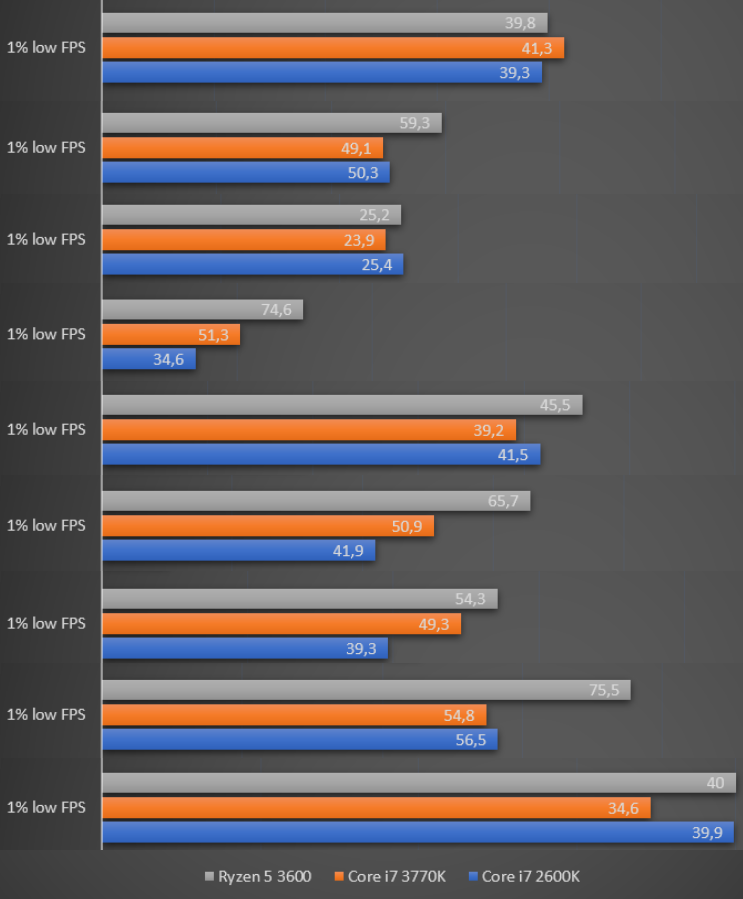 21 GB/s (17%) higher maximum memory bandwidth
21 GB/s (17%) higher maximum memory bandwidth
Benchmark tests
Compare the results of processor tests in benchmarks
Cinebench R23 (single core)
Core i3 8100
927
Ryzen 5 2600
+9%
1008
Cinebench R23 (multi-core)
Core i3 8100
3571
Ryzen 5 2600
+97%
7024
Passmark CPU (single core)
Core i3 8100
2222
Ryzen 5 2600
2229
Passmark CPU (multi-core)
Core i3 8100
6129
Ryzen 5 2600
+115%
13155
Geekbench 5 (single core)
Core i3 8100
946
Ryzen 5 2600
+9%
1033
Geekbench 5 (multi-core)
Core i3 8100
3314
Ryzen 5 2600
+69%
5596
▶️ Add your score to Cinebench R23
Specifications
List of full technical specifications for Intel Core i3 8100 and AMD Ryzen 5 2600
General information
| Manufacturer | Intel | AMD |
| Release date | October 5, 2017 | September 11, 2018 |
| Type | Desktop | Desktop |
| Instruction set architecture | x86-64 | x86-64 |
| Codename | Coffee Lake | Zen+ |
| Model number | i3-8100 | — |
| Socket | LGA-1151 | AM4 |
| Integrated graphics | UHD Graphics 630 | No |
Performance
| Cores | 4 | 6 |
| Number of threads | 4 | 12 |
| Frequency | 3. 6 GHz 6 GHz |
3.4 GHz |
| Max. frequency in Turbo Boost | — | 3.9 GHz |
| Bus frequency | 100 MHz | 100 MHz |
| Multiplier | 28x | 34x |
| Tire speed | 8 GT/s | — |
| Level 1 cache | 64KB (per core) | 96KB (per core) |
| Level 2 cache | 256KB (per core) | 512KB (per core) |
| Level 3 cache | 6MB (shared) | 16MB (shared) |
| Unlocked multiplier | No | Yes |
Power consumption
| Number of transistors | — | 4.8 billion |
| Process | 14 nanometers | 12 nanometers |
| Power consumption (TDP) | 65 W | 65 W |
| Critical temperature | 100°C | 95°C |
| Integrated graphics | Intel UHD Graphics 630 | — |
| GPU frequency | 350 MHz | — |
| Boost GPU frequency | 1100 MHz | — |
| Shader blocks | 192 | — |
| TMUs | 24 | — |
| ROPs | 3 | — |
| Computer units | 24 | — |
| TGP | 15W | — |
Max. resolution resolution |
4096×2304 — 60Hz | — |
iGPU FLOPS
Core i3 8100
0.38 teraflops
Ryzen 5 2600
n/a
9017 memory support
| Memory type | DDR4-2400 | DDR4-2933 |
| Max. size | 64 GB | 64 GB |
| Number of channels | 2 | 2 |
| Max. bandwidth | 37.5 GB/s | 43.71 GB/s |
| ECC support | Yes | Yes |
Other
| Official site | Site Intel Core i3 8100 | AMD Ryzen 5 2600 website |
| PCI Express Version | 3.0 | 3.0 |
| Max. PCI Express lanes | 16 | 20 |
| Extended instructions | SSE4.1, SSE4.2, AVX-2 | — |
Poll
What processor do you think is the best?
Core i3 8100
14 (35%)
Ryzen 5 2600
26 (65%)
Total votes: 40
Competitors
1.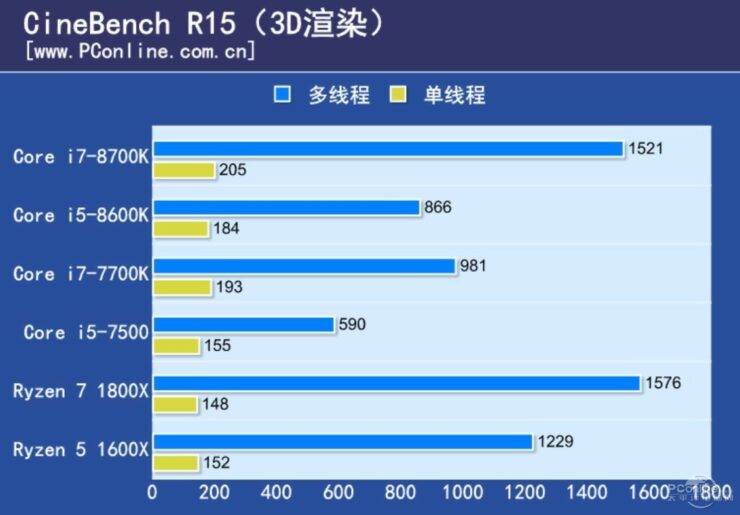
AMD Ryzen 5 2600 and AMD Ryzen 5 3600
2.
AMD Ryzen 5 2600 and AMD Ryzen 5 5600X
3.
AMD Ryzen 5 2600 and AMD Ryzen 5 5600G
4.
AMD Ryzen 5 2600 and Intel Core i5 10400F
5.
AMD Ryzen 5 2600 and AMD Ryzen 5 3600XT
6.
AMD Ryzen 5 2600 and AMD Ryzen 5 Pro 4650G
What will you choose: AMD Ryzen 5 2600 or Intel Core i3 8100?
Name
Message
AMD Ryzen 5 2600 vs Intel Core i3-8100: What is the difference?
53 BALLLA
AMD Ryzen 5 2600
53 BALLLA
Intel Core i3-8100
VS
64 Facts compared to
AMD Ryzen 5 2600
Intel Core I3-8100
Intel Core i3-8100?
- 41.67% higher CPU speed?
6 x 3.4GHz vs 4 x 3. 6GHz
6GHz - 533MHz higher RAM speed?
2933MHz vs 2400MHz - 8 more CPU threads?
12 vs 4 - Is the semiconductor smaller than 2nm?
12nm vs 14nm - 2MB more L2 cache?
3MB vs 1MB - 1.61x higher PassMark score?
13207 vs 8183 - 10MB more L3 cache?
16MB vs 6MB - 320KB more L1 cache?
576KB vs 256KB
Why is Intel Core i3-8100 better than AMD Ryzen 5 2600?
- 5°C higher than maximum operating temperature?
100°C vs 95°C - Does it have integrated graphics?
What are the most popular comparisons?
AMD RYZEN 5 2600
VS
AMD Ryzen 5 5600x
Intel Core i3-8100
VS
Intel Core i5-6500
AMD Ryzen 5 2600 9000)0002 AMD RYZEN 5 3600
Intel Core i3-8100
VS
Intel Core M3100Y
AMD Ryzen 5 2600
VS
AMD Ryzen 5 5600g
9000. 000 Intel Core i3-81100 9000 VS 9000 VS 9000 VS Core i3-8100t
000 Intel Core i3-81100 9000 VS 9000 VS 9000 VS Core i3-8100t
AMD Ryzen 5 2600
VS
Intel Core i3-12100
Intel Core i3-8100
VS
Intel Pentium G5400
AMD Ryzen 5 2600
VS AMD AMD Ryzen 5 2600
VS AMD 2700
Intel Core i3-8100
VS
Intel Core i5-7500
AMD Ryzen 5 2600
VS
AMD Ryzen 5 5500u
Intel Core I3-8100
VS
Intel Celeron Ryzen 5 2600
VS
AMD Ryzen 7 3700x
Intel Core i3-8100
VS
Intel Core i7-4770
AMD Ryzen 5 2600 9000 VS
AMD Ryzen
AMD Ryzen
ATEL 8100
VS
Intel Core i7-3770
AMD Ryzen 5 2600
VS
AMD Ryzen 5 4500u
Intel Core i3-8100
VS
9000 9000
AMD Ry vs
Intel Core i5-9400f
Intel Core i3-8100
VS
Intel Core i3-10100
Comparisement0003
4 Reviews of users
AMD Ryzen 5 2600
10.0 /10
4 Reviews of users
Intel Core i3-8100
0 Reviews of Users
Intel Core i3-8100
0. 0.0.0.0.0.0.0.0.0.0.0.0.0.0.0.0.0.0.0.0.0.0.0.0.0.0ERED Games0828 10.0 /10
0.0.0.0.0.0.0.0.0.0.0.0.0.0.0.0.0.0.0.0.0.0.0.0.0.0ERED Games0828 10.0 /10
4 Votes
Reviews not yet
performance
10.0 /10
4 Votes
reviews still not
Reliability
9000 9000 9000 /10 9000 /10 9000 /10 9000 /10 9000 /10 9000 /10 9000 9000 / votes
No reviews yet
Energy efficiency
10.0 /10
4 votes
No reviews yet Manufacturer
0024
1.CPU speed
6 x 3.4GHz
4 x 3.6GHz
CPU speed indicates how many processing cycles per second a processor can perform, considering all its cores (processors). It is calculated by adding the clock speeds of each core or, in the case of multi-core processors, each group of cores.
2nd processor thread
More threads result in better performance and better multi-tasking.
3.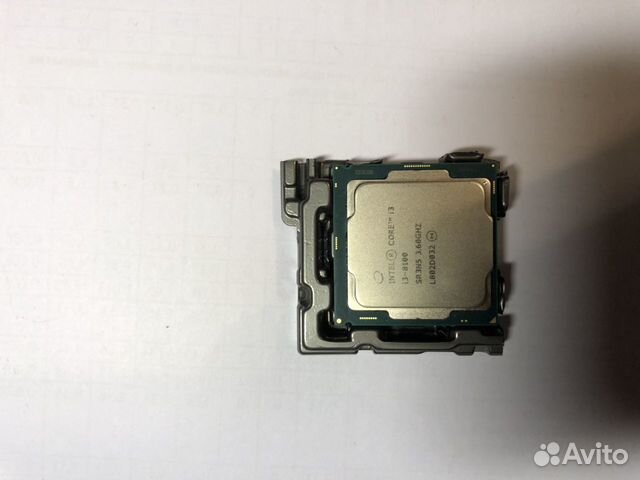 speed turbo clock
speed turbo clock
3.9GHz
Unknown. Help us offer a price. (Intel Core i3-8100)
When the processor is running below its limits, it can jump to a higher clock speed to increase performance.
4. Unlocked
✔AMD Ryzen 5 2600
✖Intel Core i3-8100
Some processors come with an unlocked multiplier and can be easily overclocked for better performance in games and other applications.
5.L2 Cache
More L2 scratchpad memory results in faster results in CPU and system performance tuning.
6.L3 cache
More L3 scratchpad memory results in faster results in CPU and system performance tuning.
7.L1 cache
More L1 scratchpad memory results in faster results in CPU and system performance tuning.
8.core L2
0.5MB/core
0.25MB/core
More data can be stored in the L2 scratchpad for access by each processor core.
9.core L3
2.67MB/core
1.5MB/core
More data can be stored in L3 scratchpad memory to access each processor core.
Memory
1.RAM speed
2933MHz
2400MHz
Can support faster memory which speeds up system performance.
2.max memory bandwidth
43.71GB/s
38.4GB/s
This is the maximum rate at which data can be read from or stored in memory.
3.DDR version
DDR (Dynamic Random Access Memory, Double Data Rate) is the most common type of RAM. New versions of DDR memory support higher maximum speeds and are more energy efficient.
4 memory channels
More memory channels increase the speed of data transfer between memory and processor.
5.Maximum memory
Maximum memory (RAM).
6.bus baud rate
Unknown. Help us offer a price. (AMD Ryzen 5 2600)
The bus is responsible for transferring data between various components of a computer or device.
7.Supports memory troubleshooting code
✔AMD Ryzen 5 2600
✔Intel Core i3-8100
Memory error recovery code can detect and repair data corruption. It is used when necessary to avoid distortion, such as in scientific computing or when starting a server.
8.eMMC version
Unknown. Help us offer a price. (AMD Ryzen 5 2600)
Unknown. Help us offer a price. (Intel Core i3-8100)
A newer version of eMMC — Built-in Flash Memory Card — speeds up the memory interface, has a positive effect on device performance, for example, when transferring files from a computer to internal memory via USB.
9.bus frequency
Unknown.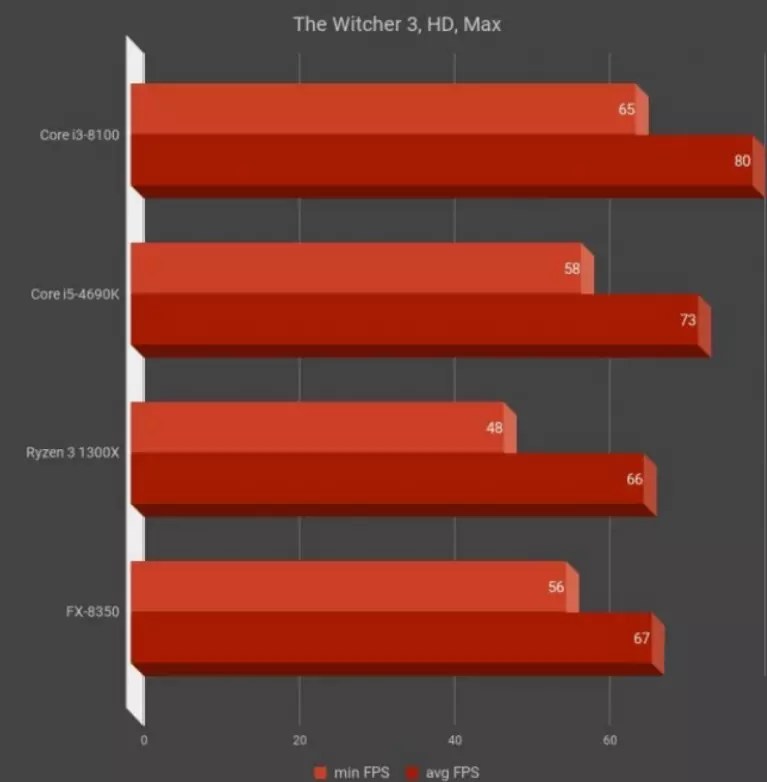 Help us offer a price. (AMD Ryzen 5 2600)
Help us offer a price. (AMD Ryzen 5 2600)
Unknown. Help us offer a price. (Intel Core i3-8100)
The bus is responsible for transferring data between various components of a computer or device
Geotagging
1. PassMark result
This test measures processor performance using multi-threading.
2. PassMark result (single)
This test measures processor performance using a thread of execution.
3.Geekbench 5 result (multi-core)
Geekbench 5 is a cross-platform benchmark that measures the performance of a multi-core processor. (Source: Primate Labs,2022)
4. Cinebench R20 result (multi-core)
Unknown. Help us offer a price. (Intel Core i3-8100)
Cinebench R20 is a benchmark that measures the performance of a multi-core processor by rendering a 3D scene.
5.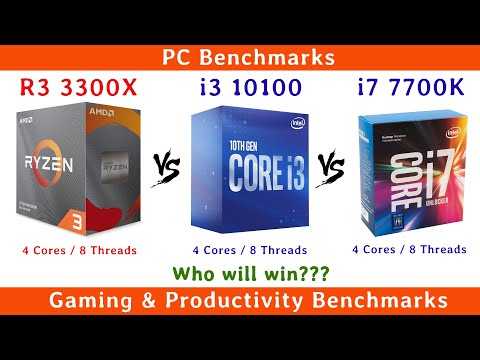 Cinebench R20 result (single core)
Cinebench R20 result (single core)
Unknown. Help us offer a price. (Intel Core i3-8100)
Cinebench R20 is a test to evaluate the performance of a single core processor when rendering a 3D scene.
6.Geekbench 5 result (single core)
Geekbench 5 is a cross-platform test that measures the single core performance of a processor. (Source: Primate Labs, 2022)
7. Blender test result (bmw27)
295.1seconds
Unknown. Help us offer a price. (Intel Core i3-8100)
Blender benchmark (bmw27) measures CPU performance by rendering a 3D scene. More powerful processors can render a scene in a shorter time.
8.Blender result (classroom)
Unknown. Help us offer a price. (AMD Ryzen 5 2600)
Unknown. Help us offer a price. (Intel Core i3-8100)
The Blender (classroom) benchmark measures CPU performance by rendering a 3D scene.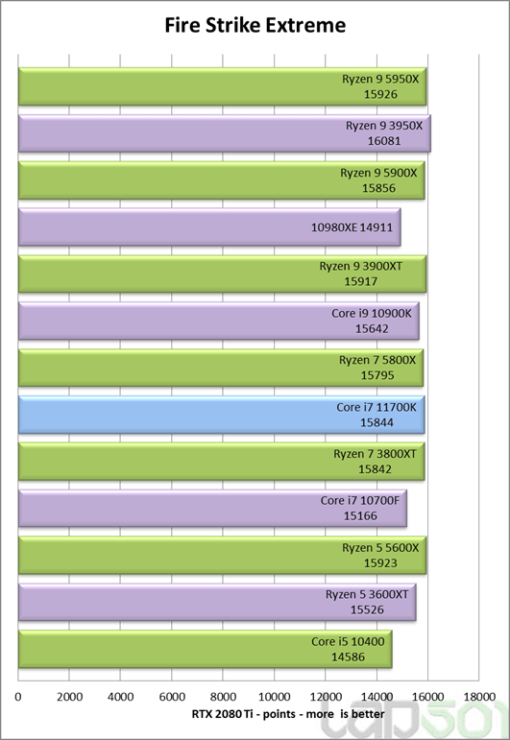 More powerful processors can render a scene in a shorter time.
More powerful processors can render a scene in a shorter time.
9.performance per watt
Unknown. Help us offer a price. (Intel Core i3-8100)
This means that the processor is more efficient, giving more performance per watt of power used.
Functions
1.uses multithreading
✔AMD Ryzen 5 2600
✖Intel Core i3-8100
processor cores into logical cores, also known as threads. Thus, each core can run two instruction streams at the same time.
2. Has AES
✔AMD Ryzen 5 2600
✔Intel Core i3-8100
AES is used to speed up encryption and decryption.
3. Has AVX
✔AMD Ryzen 5 2600
✔Intel Core i3-8100
AVX is used to help speed up calculations in multimedia, scientific and financial applications, and to improve the performance of the Linux RAID program.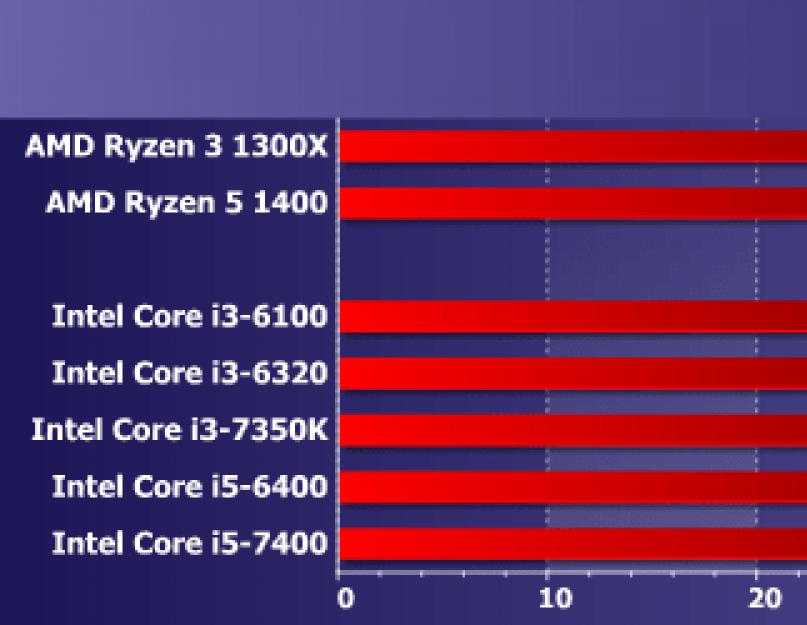
4.Version SSE
SSE is used to speed up multimedia tasks such as editing images or adjusting audio volume. Each new version contains new instructions and improvements.
5.Has F16C
✔AMD Ryzen 5 2600
✔Intel Core i3-8100
F16C is used to speed up tasks such as image contrast adjustment or volume control.
6 bits transmitted at the same time
Unknown. Help us offer a price. (AMD Ryzen 5 2600)
Unknown. Help us offer a price. (Intel Core i3-8100)
NEON provides faster media processing such as MP3 listening.
7. Has MMX
✔AMD Ryzen 5 2600
✔Intel Core i3-8100
MMX is used to speed up tasks such as adjusting image contrast or adjusting volume.
8.Has TrustZone
✖AMD Ryzen 5 2600
✖Intel Core i3-8100
Technology is integrated into the processor to ensure device security when using features such as mobile payments and video streaming through Digital Rights Management (DRM) ).
9.interface width
Unknown. Help us offer a price. (AMD Ryzen 5 2600)
Unknown. Help us offer a price. (Intel Core i3-8100)
The processor can decode more instructions per clock (IPC), which means the processor performs better
Price comparison
Cancel
Which CPUs are better?
Comparison of AMD Ryzen 5 2600 and Intel Core i3-8100
Comparative analysis of AMD Ryzen 5 2600 and Intel Core i3-8100 processors by all known characteristics in the categories: General information, Performance, Memory, Compatibility, Peripherals, Technologies, Virtualization, Graphics, Graphical interfaces, Image quality in graphics, Graphics API support, Safety and reliability.
Analysis of processor performance by benchmarks: PassMark — Single thread mark, PassMark — CPU mark, Geekbench 4 — Single Core, Geekbench 4 — Multi-Core, 3DMark Fire Strike — Physics Score, CompuBench 1.5 Desktop — Ocean Surface Simulation (Frames/s), CompuBench 1. 5 Desktop — T-Rex (Frames/s), CompuBench 1.5 Desktop — Face Detection (mPixels/s), CompuBench 1.5 Desktop — Video Composition (Frames/s), CompuBench 1.5 Desktop — Bitcoin Mining (mHash/s), GFXBench 4.0 — Car Chase Offscreen (Frames), GFXBench 4.0 — Manhattan (Frames), GFXBench 4.0 — T-Rex (Frames), GFXBench 4.0 — Car Chase Offscreen (Fps), GFXBench 4.0 — Manhattan (Fps), GFXBench 4.0 — T- Rex (Fps).
5 Desktop — T-Rex (Frames/s), CompuBench 1.5 Desktop — Face Detection (mPixels/s), CompuBench 1.5 Desktop — Video Composition (Frames/s), CompuBench 1.5 Desktop — Bitcoin Mining (mHash/s), GFXBench 4.0 — Car Chase Offscreen (Frames), GFXBench 4.0 — Manhattan (Frames), GFXBench 4.0 — T-Rex (Frames), GFXBench 4.0 — Car Chase Offscreen (Fps), GFXBench 4.0 — Manhattan (Fps), GFXBench 4.0 — T- Rex (Fps).
AMD Ryzen 5 2600
versus
Intel Core i3-8100
Advantages
reasons to select AMD RYZEN 5 2600
- The processor of 3 Month (S)
- processor is unlocked, an unlocked multiplier allows you to easily make overoking
- 8 more threads: 12 vs 4
- Approximately 8% higher clock speed: 3.9 GHz vs 3.6 GHz
- Newer manufacturing process allows the processor to be more powerful, but with lower power consumption: 12 nm FinFET vs 14 nm
- 2.
 3x L1 cache(s) more, means more data can be stored in it for quick access
3x L1 cache(s) more, means more data can be stored in it for quick access - L2 cache is 3 times (s) more, so more data can be stored in it for quick access
- L3 cache is 2.7 times (s) more, so more data can be save in it for quick access
- PassMark — Single thread mark about 1% better performance: 2251 vs 2237
- PassMark — CPU mark 2.1x better performance: 13248 vs 6164
- Geekbench 4 — Single Core benchmark approx. 1% better: 974 vs 965
- About 70% more performance in Geekbench 4 — Multi-Core benchmark: 5321 vs 3121
- About 72% more performance in 3DMark Fire Strike — Physics Score benchmark: 5742 vs 3346
- Performance in CompuBench 1.5 Desktop — T-Rex (Frames/s) about 95% better: 0.922 vs 0.473
2 cores more, ability to run more applications simultaneously: 6 vs 4
| Release date | 19 April 2018 vs January 2018 |
| Unlocked | Unlocked / Locked |
| Number of cores | 6 vs 4 |
| Number of threads | 12 vs 4 |
| Maximum frequency | 3. 9GHz vs 3.6GHz 9GHz vs 3.6GHz |
| Process | 12nm FinFET vs 14nm |
| Level 1 cache | 576 KB vs 64 KB (per core) |
| Level 2 cache | 3 MB vs 256 KB (per core) |
| Level 3 cache | 16 MB vs 6144 KB (shared) |
| PassMark — Single thread mark | 2251 vs 2237 |
| PassMark — CPU mark | 13248 vs 6164 |
| Geekbench 4 — Single Core | 974 vs 965 |
| Geekbench 4 — Multi-Core | 5321 vs 3121 |
| 3DMark Fire Strike — Physics Score | 5742 vs 3346 |
CompuBench 1. 5 Desktop — T-Rex (Frames/s) 5 Desktop — T-Rex (Frames/s) |
0.922 vs 0.473 |
Reasons to choose Intel Core i3-8100
- About 5% more maximum core temperature: 100°C vs 95°C
- CompuBench 1.5 Desktop — Ocean Surface Simulation (Frames/s) performance about 87 % more: 87.079vs 46.475
| Maximum core temperature | 100°C vs 95°C |
| CompuBench 1.5 Desktop — Ocean Surface Simulation (Frames/s) | 87.079 vs 46.475 |
Benchmark comparison
CPU 1: AMD Ryzen 5 2600
CPU 2: Intel Core i3-8100
| PassMark — Single thread mark |
|
|||||
| PassMark — CPU mark |
|
|||||
| Geekbench 4 — Single Core |
|
|||||
| Geekbench 4 — Multi-Core |
|
|||||
| 3DMark Fire Strike — Physics Score |
|
|||||
CompuBench 1. 5 Desktop — Ocean Surface Simulation (Frames/s) 5 Desktop — Ocean Surface Simulation (Frames/s) |
|
|
||||
| CompuBench 1.5 Desktop — T-Rex (Frames/s) |
|
| Name | AMD Ryzen 5 2600 | Intel Core i3-8100 |
|---|---|---|
| PassMark — Single thread mark | 2251 | 2237 |
| PassMark — CPU mark | 13248 | 6164 |
| Geekbench 4 — Single Core | 974 | 965 |
| Geekbench 4 — Multi-Core | 5321 | 3121 |
| 3DMark Fire Strike — Physics Score | 5742 | 3346 |
CompuBench 1. 5 Desktop — Ocean Surface Simulation (Frames/s) 5 Desktop — Ocean Surface Simulation (Frames/s) |
46.475 | 87.079 |
| CompuBench 1.5 Desktop — T-Rex (Frames/s) | 0.922 | 0.473 |
| CompuBench 1.5 Desktop — Face Detection (mPixels/s) | 3.843 | |
| CompuBench 1.5 Desktop — Video Composition (Frames/s) | 2.403 | |
| CompuBench 1.5 Desktop — Bitcoin Mining (mHash/s) | 6.403 | |
| GFXBench 4.0 — Car Chase Offscreen (Frames) | 1830 | |
GFXBench 4. 0 — Manhattan (Frames) 0 — Manhattan (Frames) |
3671 | |
| GFXBench 4.0 — T-Rex (Frames) | 6116 | |
| GFXBench 4.0 — Car Chase Offscreen (Fps) | 1830 | |
| GFXBench 4.0 — Manhattan (Fps) | 3671 | |
| GFXBench 4.0 — T-Rex (Fps) | 6116 |
Performance comparison
| AMD Ryzen 5 2600 | Intel Core i3-8100 | |
|---|---|---|
| Architecture name | Zen+ | Coffee Lake |
| Family | AMD Ryzen Processors | |
| Production date | April 19, 2018 | January 2018 |
| OPN PIB | YD2600BBAFBOX | |
| OS Support | Windows 10 — 64-Bit Edition, RHEL x86 64-Bit, Ubuntu x86 64-Bit | |
| Place in the ranking | 824 | 800 |
| Price now | $159. 99 99 |
$129.99 |
| Series | AMD Ryzen 5 Desktop Processors | 8th Generation Intel® Core™ i3 Processors |
| Price/performance ratio (0-100) | 24.89 | 18.33 |
| Applicability | Desktop | Desktop |
| Processor Number | i3-8100 | |
| Status | Launched | |
| Support 64 bit | ||
| Base frequency | 3.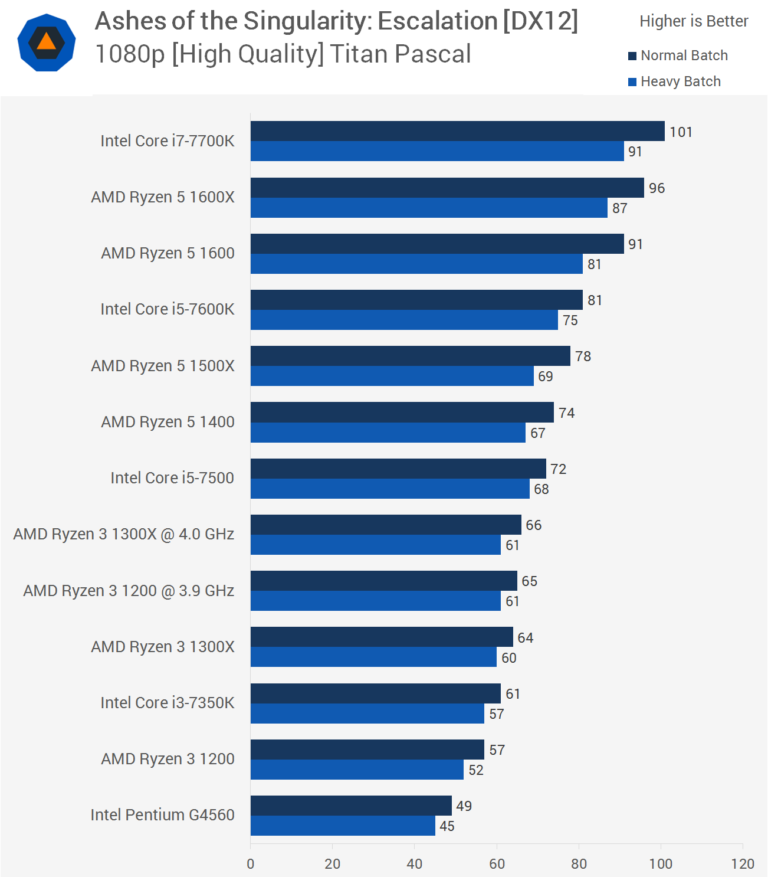 4 GHz 4 GHz |
3.60 GHz |
| Crystal area | 213 mm | |
| Level 1 cache | 576KB | 64 KB (per core) |
| Level 2 cache | 3MB | 256 KB (per core) |
| Level 3 cache | 16MB | 6144 KB (shared) |
| Process | 12nm FinFET | 14 nm |
| Maximum core temperature | 95°C | 100°C |
| Maximum frequency | 3.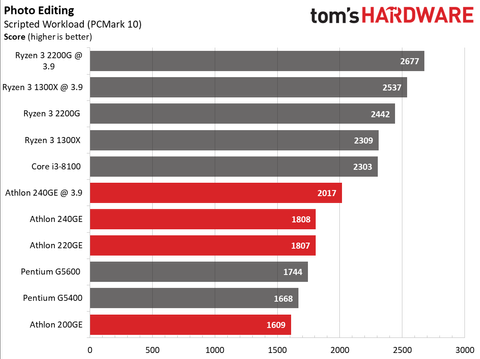 9 GHz 9 GHz |
3.6 GHz |
| Number of cores | 6 | 4 |
| Number of threads | 12 | 4 |
| Number of transistors | 4940 Million | |
| Unlocked | ||
| Bus Speed | 8 GT/s DMI3 | |
| Maximum case temperature (TCase) | 72 °C | |
| Maximum number of memory channels | 2 | 2 |
| Supported memory frequency | 2933MHz | |
| Supported memory types | DDR4 | DDR4-2400 |
| Maximum memory bandwidth | 37.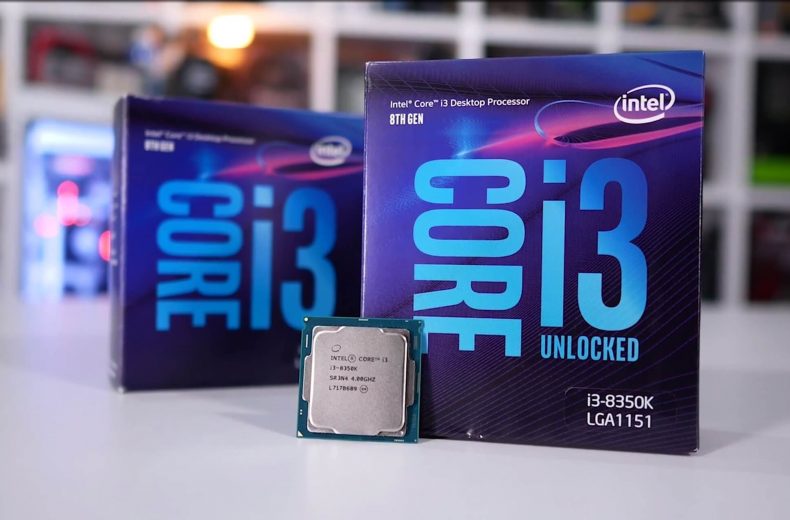 5 GB/s 5 GB/s |
|
| Maximum memory size | 64GB | |
| Maximum number of processors in | 1 | 1 |
| Supported sockets | AM4 | FCLGA1151 |
| Power consumption (TDP) | 65 Watt | 65 Watt |
| Thermal Solution | Wraith Stealth | PCG 2015C (65W) |
| Low Halogen Options Available | ||
| Package Size | 37. 5mm x 37.5mm 5mm x 37.5mm |
|
| PCI Express revision | 3.0×16 | 3.0 |
| Number of PCI Express lanes | 16 | |
| PCIe configurations | Up to 1×16, 2×8, 1×8+2×4 | |
| Scalability | 1S Only | |
| AMD Ryzen VR-Ready Premium | ||
| AMD SenseMI | ||
| AMD StoreMI technology | ||
| Intel® AES New Instructions | ||
| Enhanced Intel SpeedStep® Technology | ||
| Idle States | ||
| Extended instructions | Intel® SSE4.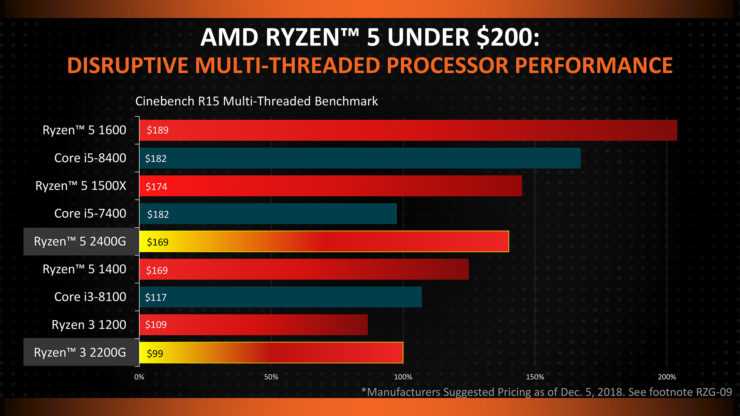 1, Intel® SSE4.2, Intel® AVX2 1, Intel® SSE4.2, Intel® AVX2 |
|
| Intel 64 | ||
| Intel® Advanced Vector Extensions (AVX) | ||
| Intel® Hyper-Threading Technology | ||
| Intel® Optane™ Memory Supported | ||
| Intel® Stable Image Platform Program (SIPP) | ||
| Intel® TSX-NI | ||
| Intel® Turbo Boost Technology | ||
| Intel® vPro™ Platform Eligibility | ||
| Thermal Monitoring | ||
| AMD Virtualization (AMD-V™) | ||
| Intel® Virtualization Technology (VT-x) | ||
| Intel® Virtualization Technology for Directed I/O (VT-d) | ||
| Intel® VT-x with Extended Page Tables (EPT) | ||
| Device ID | 0x3E91/x92 | |
| Graphics base frequency | 350 MHz | |
| Graphics max dynamic frequency | 1. 10 GHz 10 GHz |
|
| Intel® Clear Video HD Technology | ||
| Intel® Clear Video Technology | ||
| Intel® InTru™ 3D Technology | ||
| Intel® Quick Sync Video | ||
| Video memory size | 64GB | |
| Integrated graphics | Intel® UHD Graphics 630 | |
| Maximum number of monitors supported | 3 | |
| 4K support | ||
| Maximum resolution via DisplayPort | [email protected] | |
| Maximum resolution via eDP | [email protected] | |
Maximum resolution via HDMI 1.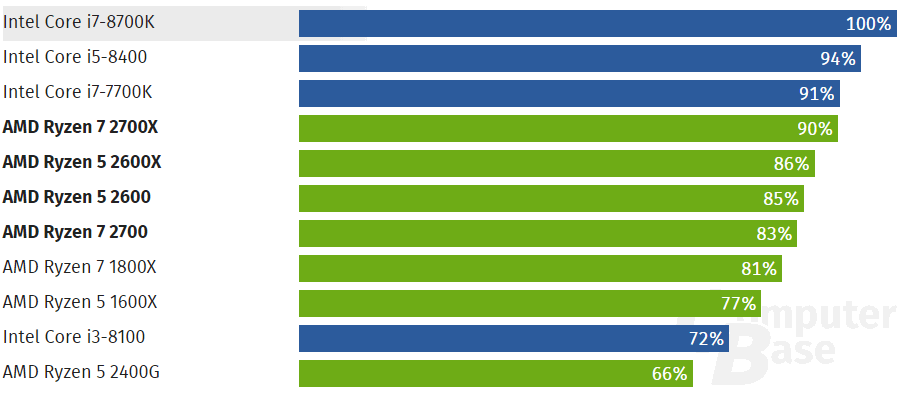 4 4 |
[email protected] | |
| DirectX | 12 | |
| OpenGL | 4.5 | |
| Execute Disable Bit (EDB) | ||
| Intel® Identity Protection Technology | ||
| Intel® Memory Protection Extensions (Intel® MPX) | ||
| Intel® OS Guard | ||
| Intel® Secure Key Technology | ||
| Intel® Software Guard Extensions (Intel® SGX) | ||
| Intel® Trusted Execution Technology (TXT) | ||
| Secure Boot |
Core i3-8100 vs.
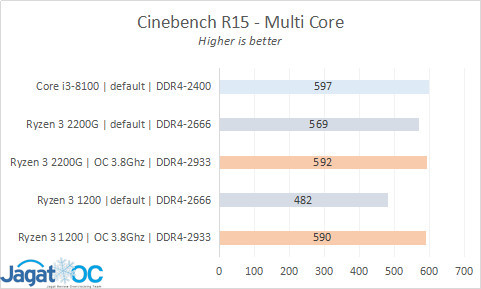 Ryzen 3 2200G: what are Intel and AMD base platforms capable of?
Ryzen 3 2200G: what are Intel and AMD base platforms capable of?
Not so long ago we looked at the situation with the most affordable Intel and AMD processors, but now we will raise the bar by evaluating the capabilities of the Core i3-8100 and Ryzen 3 2200G. Not surprisingly, both of these models are among the top ten most popular CPUs on hotline.ua. Quad-core processors are desirable not only for basic gaming systems, but also for general-purpose home PCs. What can you count on when assembling such platforms without a discrete graphics card?
Help
ZMIST
- 1 Processors
- 2 Maternal boards
- 3 RAM
- 4 Drum
- 5 Power supply
- 6 Configuration
Processors
Core i3-8100 is the youngest model in the line and, perhaps, it is also the most interesting. This is Intel’s most affordable desktop chip with four processing cores.
Ryzen 3 2200G has a similar position in AMD’s desktop chip series.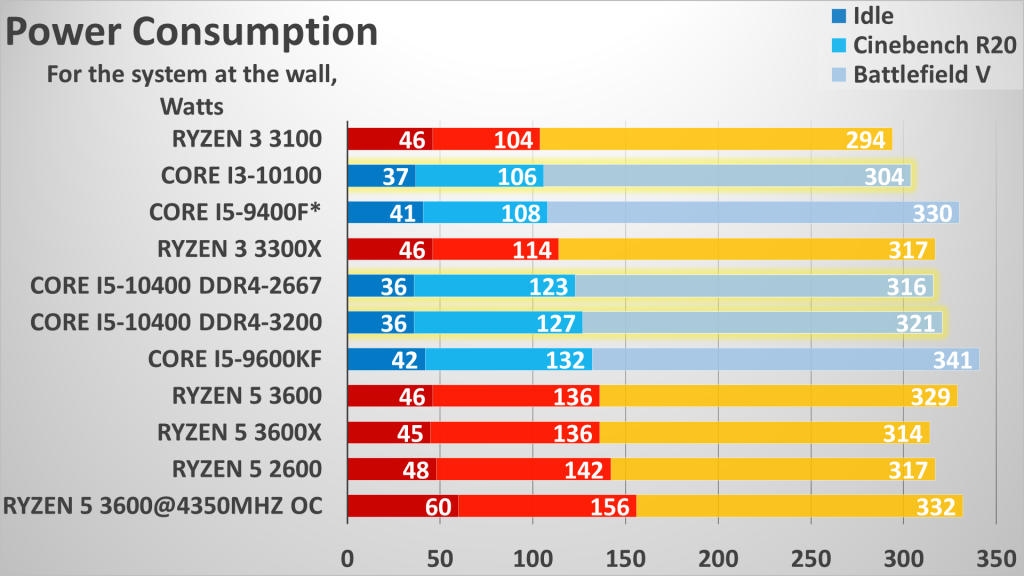 This is the least expensive model in the line of processors with Zen architecture, which is equipped with an integrated video core. The table shows the key characteristics of both processors.
This is the least expensive model in the line of processors with Zen architecture, which is equipped with an integrated video core. The table shows the key characteristics of both processors.
Course
Full Stack Development
Learn to follow a flexible schedule to become a universal expert in Back-end and Front-end knowledge. Earn $1300 per month
REGISTER!
| AMD Ryzen 3 2200G | Intel Core i3-8100 | |
| Raven Ridge | Coffee Lake | |
| Production technology | 14 nm | 14 nm |
| Number of cores/threads | 4/4 | 4/4 |
| Frequency formula | 3.5/3.7 GHz | 3.6 GHz |
| L2 cache size | 4×512 KB | 4×256 KB |
| L3 cache size | 4 MB | 6 MB |
| Memory support | DDR4-2993 | DDR4-2400 |
| Integrated graphics | Radeon RX Vega 8 (512 units) | Intel UHD 630 |
| Processor socket | Socket AM4 | LGA1151-v2 |
| Unlocked multiplier | + | — |
| Thermal Pack (TDP) | 65 W | 65 W |
| MSRP at time of announcement | $99 | $117 |
| Estimated retail price | ~$100 (UAH 2700) | ~$145 (UAH 3800) |
Core i3-8100 and Ryzen 3 2200G come with stock cooling systems. In both cases, these are rather simple air coolers, the efficiency of which is sufficient for processors to work in standard modes.
In both cases, these are rather simple air coolers, the efficiency of which is sufficient for processors to work in standard modes.
Motherboards
The Intel platform used model MSI h410M GAMING PLUS based on the Intel h410 chipset. This is a compact Micro-ATX board with reduced dimensions — 230 × 185 mm. Shades of a gaming orientation to the device are given by a decorative color of the printed circuit board, bright red slots for memory modules and a PCI Express x16 connector with a metal casing that increases the mechanical strength of the connector.
Also included is isolation of the audio path and modest illumination of the boundary track with red LEDs. It is also possible to connect an external LED strip, albeit one-color.
We have three expansion slots on board — one PCI-E x16 and a pair of PCI-E x1. For connecting drives, there are 4 SATA connectors and an M.2 port for devices up to 80 mm long. The fastest SSDs, alas, will be limited to a bandwidth of 20 Gb / s.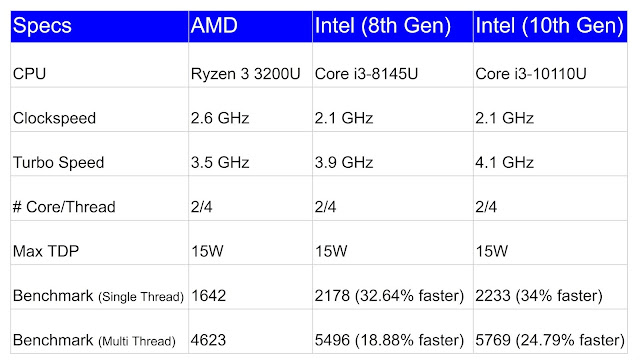
Intel h410 only supports PCI-E 2.0 lines, so there is no point in chasing the most productive drives in this case. The M.2 port can easily be occupied by a SATA drive of the appropriate format. This will not bring a performance increase compared to 2.5-inch devices, but with the devices of both formats actually priced the same, compact options allow you to get rid of unnecessary wires in the system.
You may have already noticed that the power elements of the MSI h410M GAMING PLUS power subsystem do not use additional cooling. We will return to this feature of the board during practical tests. In the meantime, it can be noted that a 6-phase (4 + 2) VRM scheme is used here.
Let’s pay attention to the fact that the board has only two 4-pin connectors for connecting cooling system fans. In this regard, manufacturers do not particularly spoil the owners of budget motherboards. However, for a system without a discrete graphics card and a rack of fast hard drives, even this set will be enough.
Even relatively inexpensive MSI boards are recently equipped with an express diagnostic system. The EZ Debug LED set is very helpful in situations where there are problems starting the platform. By the burning indicator, you can determine the problem node (processor, memory, video, boot drive).
As a curiosity, we note the use of the Intel i219-V network controller, which does not always accompany the base boards. But we expect the audio codec — Realtek ALC887.
The set of interface connectors can not be called diverse, but rather there is only the most necessary — PS / 2, four USB 2.0, a pair of USB 3.1 Gen1 (USB 3.0) and an Ethernet socket. HDMI and DVI-D are provided for connecting display devices. This is important for those who plan to use the integrated processor graphics — just our case. Acoustics can be connected using three audio connectors.
For the AMD system, we also used an AMD A320 motherboard, the base chipset for the Socket AM4 platform.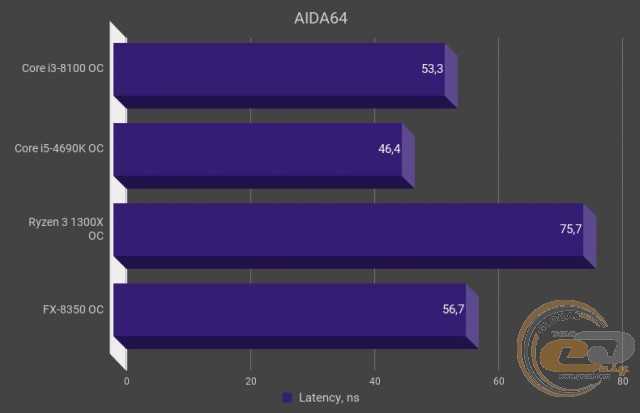 Model 9The 1322 MSI A320M GRENADE is offered in the popular Micro-ATX format for this class with slightly reduced dimensions (244×210 mm).
Model 9The 1322 MSI A320M GRENADE is offered in the popular Micro-ATX format for this class with slightly reduced dimensions (244×210 mm).
Just by the memorable name, it is easy to assume that the manufacturer is positioning this model as the basis for a basic gaming system. In addition to the catchy name, there are other attributes of the «out of office» platform — a metal casing for the main expansion slot, an isolated audio path with a set of yellow barrels of specialized capacitors, as well as additional lighting at the corners of the board, and even the ability to connect an external RGB tape with 5050 (12V) elements.
The power subsystem of the board has a 5-phase layout (3 + 2), and the elements responsible for powering the processor cores are additionally cooled by a rather massive radiator block.
MSI A320M GRENADE offers three expansion slots, and the board is arranged in such a way that even when using a discrete graphics card with a dual-slot cooler, access to both PCI-E x1 remains open.
The AMD A320 does not have such strict restrictions on the number of memory modules used as in the case of the Intel h410. However, in order to save money and space on the PCB, most models based on the base AMD chipset are equipped with a pair of DIMM slots. Although there are motherboards based on AMD A320 and with four slots for RAM strips.
The AMD A320 chipset supports 4 SATA ports, any AM4 CPUs can provide a couple more SATA 6 Gb / s lines, but motherboard manufacturers, as a rule, do not count on these resources, offering only four SATA for budget models. It is possible to create arrays of RAID levels 0, 1 or 10, which, in principle, boards based on Intel h410 are not able to do. AMD A320 also supports SATA Express, but in the last couple of years no one remembers this combined interface.
The MSI A320M GRENADE also has an M.2 port on board. When using Ryzen series processors, the connector is fully functional, allowing you to connect both the fastest PCI-E 3.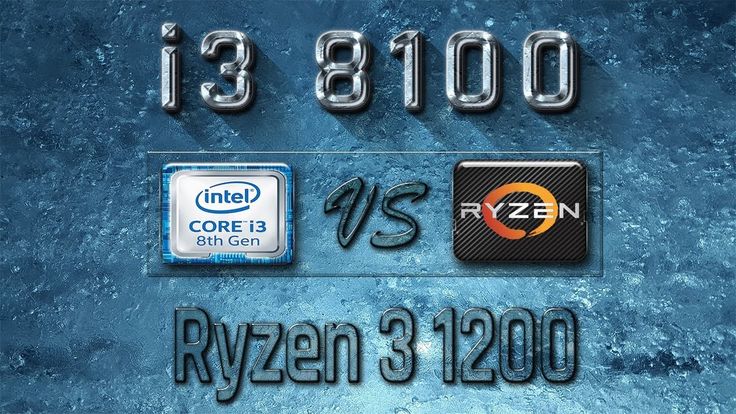 0 x4 NVMe models and SSDs with SATA data transfer. Here the advantage is on the side of the AMD base platform.
0 x4 NVMe models and SSDs with SATA data transfer. Here the advantage is on the side of the AMD base platform.
The AMD A320 chipset nominally also allows one USB 3.1 Gen2 (10 Gb/s), but corresponding ports are extremely rare on motherboards with this chipset, and the MSI A320M GRENADE is no exception.
Generally a typical sound/network controller configuration for entry-level devices. The board uses the base 8-channel Realtek ALC887 and gigabit Realtek RTL8111H. Of the pleasant — three 4-pin connectors for connecting and configuring cooling system fans.
The set of ports available on the interface panel does not shine with variety, but here we did not expect any revelations. There is a combo PS / 2, a pair of USB 2.0 and four USB 3.1 Gen1 (USB 3.0) and an Ethernet socket. Three video outputs are offered — HDMI, DVI-D and even analog VGA (D-Sub). In the specification, the manufacturer emphasizes that when using Athlon chips with integrated graphics, only HDMI and VGA can be used. There are no such restrictions for APUs of the Ryzen family.
There are no such restrictions for APUs of the Ryzen family.
Speakers can be connected using three 3.5 mm audio jacks. For multi-channel sets, you will have to use connectors placed on the case wall.
In general, the capabilities of the base platforms of Intel and AMD are comparable. The AMD A320 chipset offers a bit more functionality, but it’s not uncommon for extra features to be dropped by motherboard manufacturers. In the class of entry-level devices, it is important to keep the balance of features and final price.
One of the obvious advantages of the Socket AM4 launch platform is the potential ability to use high-speed PCI-E 3.0 x4 NVMe M.2 drives. But this feature remains optional. Not all motherboards with AMD A320 actually have an M.2 port, and its mode of operation also depends on the processor used. Full speed mode requires a Ryzen family chip.
Native support for one USB 3.1 Gen2 port actually remains declarative, because such ports are actually not found on real boards with AMD A320.
| AMD A320 | Intel h410 | |
| CPU/GPU/RAM overclocking | -/-/+ | -/-/- |
| SLI/CrossFire Bundles | — | — |
| PCI Express lanes | 4 (2.0) | 6 (2.0) |
| SATA 6 Gb/s ports | 4 | 4 |
| RAID arrays | 0, 1, 10 | — |
| USB 3.1 Gen2 | 1 | — |
| USB 3.1 Gen1 (3.0) | 2+4 | 6 |
| USB 2.0 | 6 | 6 |
But where the AMD A320 really outperforms its opponent from Intel is the ability to use memory module modes higher than those declared for Ryzen processors (DDR4-2666/2933). Motherboard manufacturers promise stable operation with DDR4-3200 modules for these chips. This is a very nice bonus, both for chips for which the maximum frequency of the Infinity Fabric internal bus is important, and for hybrid APUs, where any acceleration of the memory subsystem affects the capabilities of the integrated video core.
For the A-series and Athlon X4 models of the Bristol Ridge family, the DDR4-2400 mode remains the limit, and the maximum for the new Athlon 200GE/220GE/240G is DDR4-2666.
In the case of Intel, the situation is fundamentally different. Only motherboards based on the top-end Intel Z370/Z390 chipsets can deviate from the set operating modes of the RAM, and models based on less functional PCHs can only offer memory operation in the mode set by Intel for certain CPU lines. For all Celeron/Pentium Gold/Core i3 series chips it is DDR4-2400, while for Core i5/i7/i9the bar has been raised to DDR4-2666. You can allow more only on boards with enthusiastic Intel Z370/Z390.
RAM
During testing, we used the limits of each platform. The Intel-based system was equipped with a dual-channel DDR4-2400 kit of a typical size for a PC of this class — 8 GB (2×4 GB). A specific set in this case is not of fundamental importance, the most accessible modules will do.
For a visual example, we used the HyperX Fury HX424C15FBK2/8 DDR4-2400 kit with the basic timing formula 15-15-15-35 and a supply voltage of 1.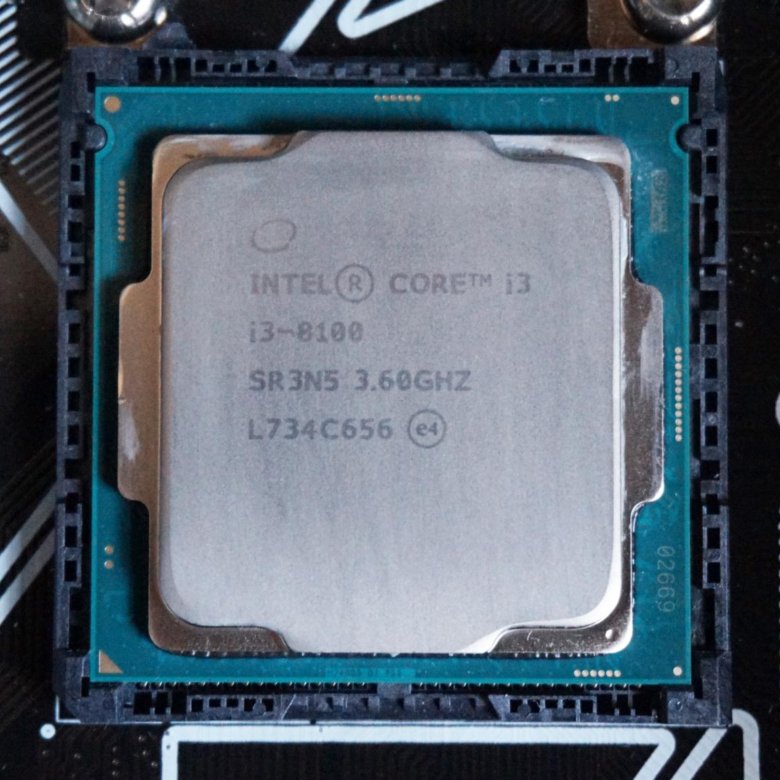 2 V. The delays are absolutely typical for most entry-class modules. Memory sticks from HyperX are equipped with additional heatsinks, but in normal operation this is nothing more than an external decoration.
2 V. The delays are absolutely typical for most entry-class modules. Memory sticks from HyperX are equipped with additional heatsinks, but in normal operation this is nothing more than an external decoration.
As we already mentioned, there is no point in equipping platforms with Core i3 processors and motherboards based on Intel h410/B360/h470 with faster memory modules. They will be limited to DDR4-2400 mode. At the same time, if you plan to use the integrated processor graphics, it is important to get a dual-channel memory access mode, and for this you need a couple of modules. For a system with two DIMM slots, this may not be the most convenient option in terms of a potential upgrade, but here you already have to choose.
For the AMD platform, we used the same set of HyperX DDR4-2400 memory modules. Since the motherboard even on the base AMD A320 chipset allows you to experiment with RAM, the DDR4-3200 operating mode was set with delay settings of 16-18-18-39 at 1. 35 V. An increase in memory bandwidth will obviously be useful for accelerating the graphics subsystem, and for other applications it will not be superfluous either. Do not rely entirely on possible overclocking. To get stable operation of DDR4-2400 modules in DDR4-3200 mode, you still need luck, but if it accompanies, then this is an opportunity to save a little.
35 V. An increase in memory bandwidth will obviously be useful for accelerating the graphics subsystem, and for other applications it will not be superfluous either. Do not rely entirely on possible overclocking. To get stable operation of DDR4-2400 modules in DDR4-3200 mode, you still need luck, but if it accompanies, then this is an opportunity to save a little.
Drive
Hard drives are becoming less and less of a PC must-have, even when it comes to entry-level platforms. With the price of solid state drives dropping, HDDs are becoming a special case when you need to store large amounts of data. Over the past year, SSDs have fallen in price by at least half, and a 250 GB SSD can be bought for $30-40, while 500 GB models are already offered from $60.
We compared platforms using the 240 GB HyperX SSD Fury 3D (KC-S44240-6F) as the system drive. A typical entry-level SSD based on 3D TLC flash with a sequential read/write speed of around 500 MB/s. A claimed 80TB guaranteed write capacity (TBW) and a 3-year warranty are typical for this class of device.
Power supply
During the experiments with platforms, the Aerocool KCAS-500W basic power supply was used. Models of this line enjoy «popular fame», but in this case this is not a recommendation, but an attempt to simulate conditions close to natural when assembling entry-level systems.
First of all, we were interested in the energy efficiency indicators of a PC when using a non-top-end powerful unit, a relatively inexpensive power supply unit. By the way, Aerocool recently offered Aerocool KCAS Plus blocks with certain improvements, but we will not judge the consumer properties of the updated devices.
Test stand configuration
| Processors | Ryzen 3 2200G (4/4, 3.5/3.7 GHz) | AMD, www.amd.com |
| Core i3-8100 (4/4, 3.6 GHz) | TeleMart, www.telemart.ua | |
| Motherboard | MSI A320M GRENADE (AMD A320) | MSI, www.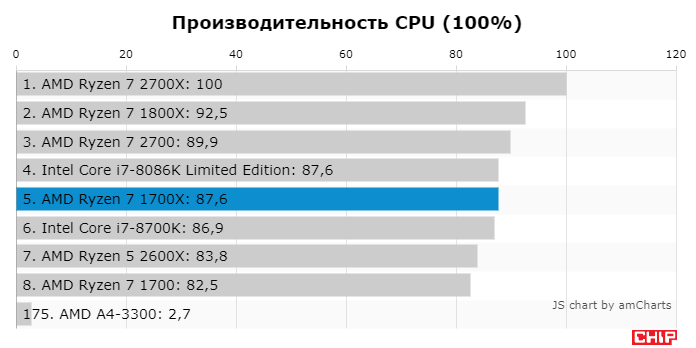 msi.com msi.com |
| MSI h410M GAMING PLUS (Intel h410) | MSI, www.msi.com | |
| RAM | HyperX Fury DDR4-2400 8 GB (HX424C15FBK2/8) | HyperX, www.hyperxgaming.com |
| Accumulator | HyperX SSD Fury 3D 240 GB (KC-S44240-6F) | HyperX, www.hyperxgaming.com |
| Power supply | Aerocool KCAS-500W, 500W | Aerocool, www.aerocool.com.tw/en/ |
| Monitor | Acer Predator XB271HK (27″, 3840×2160) | Acer, www.acer.ua |
Performance
Since both processors are not hot new, we already have some idea of the balance of power between the Core i3-8100 and Ryzen 3 2200G. Nevertheless, it is interesting to evaluate the strengths and weaknesses of both processors within budget platforms. That is, in conditions as close to real as possible — with basic motherboards, 8 GB of RAM, a simple SSD and no discrete graphics card.
Before practical performance tests, it was interesting to look at the efficiency of both chips with RAM. Other things being equal, the Core i3 had a noticeable advantage. Does the situation change if the Intel chip is limited to DDR4-2400 mode, and the Ryzen 3 2200G has privileges in the form of DDR4-3200?
In this case, a platform with an AMD processor really has about a third more bandwidth, but it’s still not possible to get the same memory latency as the Core i3. Even despite the significant difference in DDR4 frequencies, the Intel chip looks preferable here. After repeated BIOS and AGESA microcode optimizations, AMD developers managed to slightly reduce the lag in delays, but we are not talking about similar efficiency yet.
We are not sure that many owners of systems of this class are seriously passionate about rendering, but the test stage of Cinebench R15 based on the real Cinema 4D engine allows you to evaluate the balance of power in such tasks and easily compare performance with those for other CPUs. Both in multi-threaded mode and at the stage of rendering to a single thread, both processors show very similar results. The platform with the Core i3-8100 has a slight advantage.
Both in multi-threaded mode and at the stage of rendering to a single thread, both processors show very similar results. The platform with the Core i3-8100 has a slight advantage.
To close the issue with resource-intensive rendering — an indicative multi-threaded load, we will present the results of measurements in various applications. In all cases, the Ryzen 3 2200G took 5-15% longer to complete a task than the Core i3-8100. The difference is relatively small, but the stability of the results is proof that the Intel chip is somewhat faster in such tasks.
Checking archivers also reveals the advantage of the Core i3-8100. Memory latency is of great importance for the performance of the built-in WinRAR 5.7 test, because here the Intel chip has more than a 10% lead. This is despite the fact that the platform with the Ryzen 3 2200G is equipped with DDR4-3200 memory, and the base system with Core i3 is content with DDR4-2400.
In the new version of the 7-Zip 19.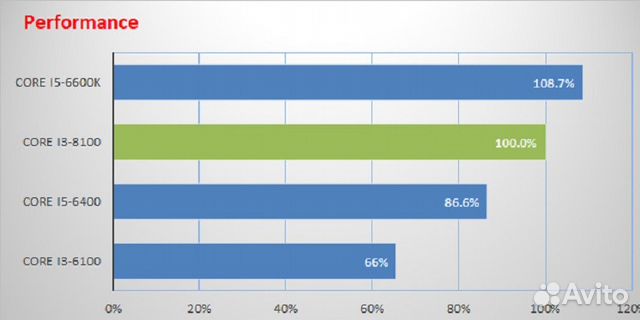 0 archiver, the platform with the Intel chip is also faster, but the advantage is small (~4%).
0 archiver, the platform with the Intel chip is also faster, but the advantage is small (~4%).
In video transcoding tasks, the 4-core Intel looks more convincing, and in both test stages, the Core i3-8100 significantly outperformed the Ryzen 3 2200G.
At the same time, the comprehensive PCMark 10 test favors the AMD processor. For a number of subtests included in the set of test stages, OpenCL calculations are used, using GPU resources. This is the strength of the Ryzen 3 2200G when compared to the Core i3-8100.
While experimenting with the capabilities of both platforms, we also tested how the systems would handle photo processing in the XnView 2.47 application. It took almost the same amount of time for both PCs to convert a set of RAW files to JPG with a few additional filters applied. A difference of a couple of seconds can be considered a measurement error.
According to the results of the PerformanceTest 9.0 set of synthetic processor tests, the Core i3-8100 is 8% faster.
But when it comes to graphics, here, even in the «non-core» benchmark, there is almost a twofold advantage for the Ryzen 3 2200G.
The popular 3DMark test set shows that the difference can be even more noticeable. At the same time, this package also registers somewhat more modest computing capabilities of the AMD processor in gaming tasks. But since the performance of the Vega 8 graphics core is significantly higher than that of the Intel UHD 630, the Ryzen 3 2200G leaves a noticeable lead in the final results. When using integrated graphics, it will remain the bottleneck of the system in games, therefore, in such situations, the advantage of the CPU unit is of no fundamental importance.
In real-life games, the Ryzen 3 2200G leaves no chance for the Core i3-8100. Yes, when using integrated graphics, you will have to make compromises in resolution and graphics quality settings anyway, but the AMD chip leaves a lot more options.
Even 720p in some projects becomes a serious test for integrated GPUs, while in Full HD mode, tolerable performance can be obtained far from all games, even with minimal graphics quality. However, the platforms in question are, in principle, not considered as gaming, although they may well become them after installing a discrete video card.
However, the platforms in question are, in principle, not considered as gaming, although they may well become them after installing a discrete video card.
Heating and power consumption
During testing of both platforms, we also evaluated the temperature conditions of the power subsystem. Of course, a lot here depends on the configuration of cooling systems, ventilation inside the case, etc., but in this case the systems were used in identical conditions — on an open bench, and were used with standard processor coolers for Core i3-8100 and Ryzen 3 2200G.
First of all, I was curious to know how hot the VRM elements will be on the MSI h410M GAMING PLUS motherboard, which is not equipped with a heatsink for power keys.
With a high simultaneous load on the CPU and GPU in the AIDA64 stress test, after a half-hour session, the power assemblies warmed up to only 45C. On throttles, the pyrometer registered 47–48. Let’s pay attention to the fact that the base cooler blows around the elements around the processor socket.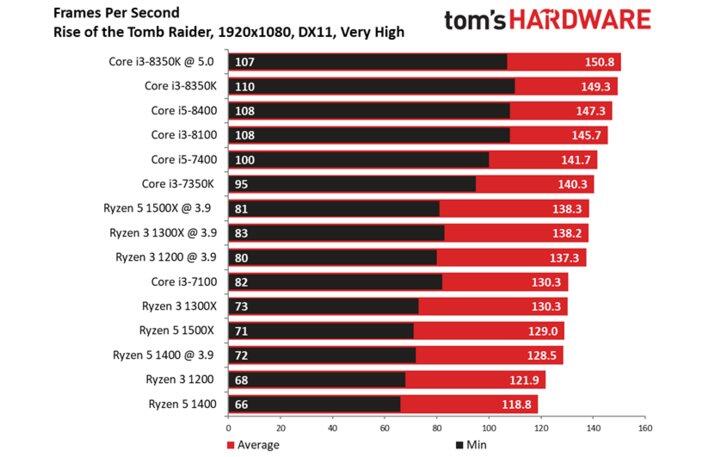
The proposed VRM scheme handles a 4-core Core i3-8100 in normal mode without much difficulty. Of course, when using the 8-core Core i9-9900K, the situation could be different, but in conjunction with such processors, motherboards with a more powerful power unit will most likely be used.
As for the Core i3-8100, under complex load the processor warmed up to 63C at a standard cooler fan speed of 1600 rpm.
MSI A320M GRENADE motherboard for AMD platform is equipped with an additional heatsink to dissipate heat from the power switches. Under load, this block heated up to 38C. Since there are no built-in VRM thermal sensors, let’s assume that the actual temperature of the elements is about 10C higher. At the same time, the temperature of the assemblies, for which an additional cooler is not used, increased to 50C under high load. Again, the power block capabilities of the board are more than enough for Ryzen 3 2200G-level chips.
As for the processor heating, at a fan speed of 1700 rpm, the temperature of the chip under maximum load increased to 70C.
We also measured the actual power consumption of the platforms. At rest, the Core i3-8100 PC consumed only 19 watts. The system with Ryzen 3 2200G consumed a little more — 24 watts. At the same time, it is worth noting that the AMD platform in our case is equipped with a large number of LEDs, and the memory worked in DDR4-3200 mode at 1.35 V, while the base DDR4-2400 and 1.2 V were used for the Intel system.
Under multi-threaded CPU load during video encoding, the system on the Ryzen 3 2200G required approximately 20W more power, and during the simultaneous stress test of the CPU / GPU units, 25-30W more. The difference as a whole is absolutely not critical, especially if we take into account the difference in the performance of the integrated video core and the difference in the operating modes of the RAM.
Total power consumption of 100 W is a clear demonstration of the energy efficiency of this class of system. This implies the requirements for the power of the power supply used. Although, here it is important not to confuse the power and quality of the PSU. For a system with a 4-core processor without discrete graphics, a 200-watt unit is enough, but 400+ watt models allow you to install a video card, even if it is a long-term issue.
Although, here it is important not to confuse the power and quality of the PSU. For a system with a 4-core processor without discrete graphics, a 200-watt unit is enough, but 400+ watt models allow you to install a video card, even if it is a long-term issue.
Results
Evaluating both entry-level platforms from Intel and AMD, we can say that in general they offer similar functionality, while each has its own strengths and weaknesses. A system with a Core i3-8100 often performs somewhat better on CPU-heavy computational tasks, while also being slightly more economical.
The AMD platform in this class offers a significantly more powerful integrated graphics core. Of the useful options, we highlight the ability to use high-speed M.2 drives (PCI-E x4) and potential support for USB 3.1 Gen2 ports. The Ryzen 3 2200G processor is now much cheaper than the Core i3-8100 and at a comparable cost of motherboards it saves $30-40. The AMD chip has an unlocked processor multiplier and a frequency potential of 3. 8-4.0 GHz, the graphics core can also be further accelerated. However, overclocking will require a more expensive motherboard based on AMD B350/B450 and an efficient cooler. However, this is a completely different story.
8-4.0 GHz, the graphics core can also be further accelerated. However, overclocking will require a more expensive motherboard based on AMD B350/B450 and an efficient cooler. However, this is a completely different story.
Core i3-8100 processor provided for testing by TeleMart, www.telemart.ua
Intel core i3 8100 analog amd • Web cheat sheet for Internet entrepreneurs!
Contents
- 1 Intel Pentium G4650 (or G4600) Kaby Lake — minimum required
- 2 AMD Ryzen 3 1200 — budget miracle
- 3 Intel Core i3 8100 — really decent i3
- above average AMD
- 5 Intel i5 8400 — honest six-core
- 6 AMD Ryzen 7 1700 — the best of AMD
- 7 Intel i7-8700K — maximum, just maximum
- 8 Other options
- 9 Benefits
- 9.1 Reasons to choose Intel Core i3-8100
- Reasons to choose Intel Core i3-8100
- AMD 9.1 1600
- 10 Benchmark Comparison
- 10.
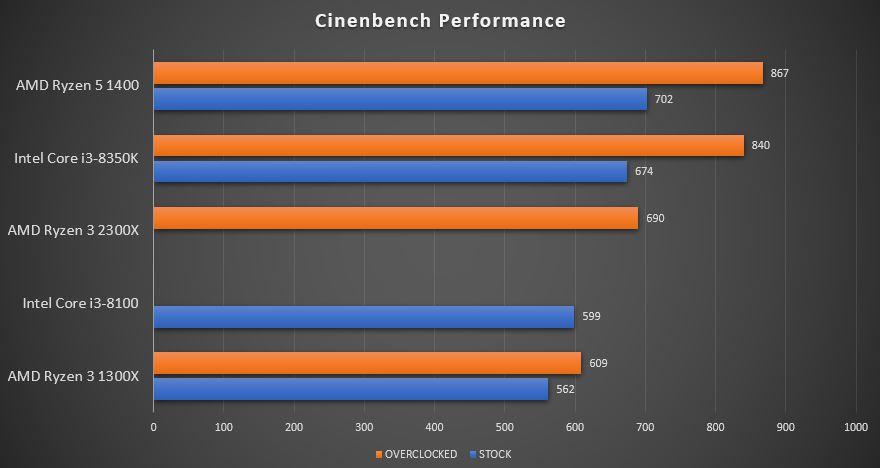 1 Recommended reading
1 Recommended reading
- 10.
The main focus during the presentation of the Intel Coffee Lake line was shifted towards 6-core K-series models with an unlocked multiplier. However, the focus of public attention is drawn to the first 4-core processors of the Intel Core i3 series. Let’s evaluate their capabilities using the example of the most accessible representative.
For a long time, the Intel Core i3 series included exclusively 2-core 4-thread solutions, and for a full-fledged 4-core one had to rise to the Core i5 series. Qualitative evolutionary changes in this regard began in 2017 with the release of the Pentium Kaby Lake series. They quickly won people’s love and respect, providing the same 2 cores and 4 threads as the representatives of the Core i3 series. Yes, with slightly lower clock speeds, but at a much more attractive price.
And in order to raise interest in the Core i3 series, improving its attractiveness against the background of external and internal competitors, it was decided to provide the user with full-fledged four cores with a corresponding increase in cache memory.
The Intel Core i3-8100 became the most affordable representative of the line at the time of preparation of the material. Its base frequency is 3.6 GHz. There is still no support for Turbo Boost technology — apparently, Intel saved this feature for the next series, so the speed cannot be increased dynamically.
If we compare the new product with its predecessor in the face of the Intel Core i3-7100, we will see an increase in the number of cores from 2 to 4 with a proportional increase in the cache memory of all three levels and a decrease in the clock frequency from 3.9 to 3.6 GHz, with an increase in the thermal package from 51 to 65 watts.
The RAM controller now only supports DDR4 memory. You are guaranteed to be able to install modules in 2-channel mode with a total capacity of up to 64 GB with a frequency of 2400 MHz. But if you have a motherboard based on the Intel Z370 chipset, you can try to overclock the memory to higher speeds.
In turn, iGPU changed only the name — instead of HD Graphics 630 we get UHD Graphics 630, as well as adding support for OpenGL version 4.5 instead of 4.4. It uses the same microarchitecture and has 23 execution units active. The clock frequencies have not changed either: 350 MHz at nominal and up to 1100 in dynamic overclocking. In older models, the number of execution units rises to 24, and the speed in turbo mode also increases.
Outward changes also include redesign of the package from more stylish and calm to more colorful and catchy. The package traditionally includes a compact processor cooler, the design of which has not undergone visible changes. It still consists of a small rounded aluminum heatsink and a 7-blade axial fan. Thermal paste is applied to the base, and a 4-pin connector is used for connection.
The official price tag of the novelty remained at $117, although in reality their prices differ. For example, in the US market, the Intel Core i3-8100 can be found for $130, while $110 is asked for its predecessor. In the domestic market, the difference is slightly lower: $136 and $126, respectively.
In the domestic market, the difference is slightly lower: $136 and $126, respectively.
Unfortunately, we did not manage to get the Intel Core i3-7100 model for the test, so we used the Intel Core i5-4690K as another interesting opponent. It’s hard to find on sale, and the cost is much higher, but we thought that we need to compare the new product with 4-core previous generations and evaluate the performance changes due to the use of a new microarchitecture and memory.
The direct external competitor for the Intel Core i3-8100 is the 4-core AMD Ryzen 3 1300X. The box version of which is a couple of dollars more expensive, and the tray version is a little cheaper. At the time of testing, we did not have this CPU, so we decided to make an analogue from AMD Ryzen 5 1400. To do this, we simply turned off SMT technology, getting 4 cores and 4 threads, and also set the frequency at 3.6 GHz — this is exactly the indicator in The load was demonstrated by the recently tested Ryzen 3 1300X. And the cache memory of all three levels is the same for them.
And the cache memory of all three levels is the same for them.
And the final competitor is the 8-core AMD FX-8350, which can still be found in the same $136 category. In single-threaded mode, he, of course, is inferior to his opponents, but in multi-threaded mode, he should have a chance.
Now a few words about test configurations. The Intel Core i3-8100 was tested on a GIGABYTE Z370 AORUS Ultra Gaming board with 16 GB of Patriot Viper 4 RAM. And the Thermalright Archon SB-E X2 cooler was responsible for its cooling. Under load in the stress test, the maximum temperature of the cores did not exceed 46 ° with a critical indicator of 100 °.
Base test configuration:
- Intel Core i3-8100
- GIGABYTE Z370 AORUS Ultra Gaming
- Thermalright Archon SB-E X2
- Inno3D iChill GeForce GTX 1080 X3
- 2x8GB DDR4-3200 Patriot Viper 4
- GOODRAM Ir >
Intel Core i5-4690K tested using ASRock Z97 Extreme6 motherboard, 16GB G. Skill TridentX DDR3 RAM and the same cooler.
The Ryzen series was tested on a familiar bench with an MSI X370 SLI PLUS motherboard, Patriot Viper 4 RAM, and be quiet! Silent loop.
AMD FX-8350 paired with ASRock Fatal1ty 990FX Killer motherboard, 2-channel DDR3 G.Skill TridentX kit and Noctua NH-U12P cooler.
Inno3D iChill GeForce GTX 1080 X3 was used in all cases. And the disk subsystem included a GOODRAM Iridium PRO series SSD and a 2-terabyte Seagate IronWolf HDD.
We will compare processors in two stages. First, we compare their results in the nominal mode when running synthetic and gaming tests, and then in overclocking. The base memory frequency was selected based on the maximum guaranteed performance of each processor. That is, for Intel Core i3-8100 — this is DDR4-2400 mode, for i5-4690K is DDR3-1600, AMD Ryzen 3 is DDR4-2667 and FX-8350 is DDR3-1866.
In AIDA64 AMD Ryzen 3 1300X proved to be the best of all, which is ahead of Intel Core i3-8100 by 14-22% in operations of copying, reading and writing information to RAM.
But in terms of data access latency, the Intel Core i5-4690K is already in the lead, although the 4-core Intel Core i3 is only 2% behind.
In the 7-Zip archiver, AMD FX-8350 took the lead, outperforming the tested new product by an impressive 23-65%.
A similar situation is observed in WinRAR , however, the gap is reduced to 45%.
Scene rendering in the Corona was once again best done by the representative of the eternally young AMD FX series. But the Core i3 took 13% more time to do this.
It is curious that in V-Ray the Core i3-8100 is already 10 -26 seconds ahead of the other competitors.
Video encoding in benchmark x265 again brings a novelty to Olympus, which took a little more than 78 seconds on average. The opponents were 6-9 seconds behind.
In CineBench R15 , the Core i3 looks the best. Yes, it finished second in the CPU test, trailing AMD FX-8350 by 5%, but in OpenGL it had no equal. He was ahead of his competitors by 6-47%.
Finally, in RealBench , Intel Core i3-8100 takes the lead again in the final result. Intel Core i5-469 climbed to second place0K, only 2% behind the winner. But in heavy multitasking, it was AMD FX that did it all.
Now it’s time for gaming benchmarks. Let us remind you once again that we used those projects that are typical representatives of their classes. That is, some games are highly dependent on the performance of the processor in single-threaded mode, others support multi-threading with weak optimization, and still others, on the contrary, can perfectly load all available cores and threads. The test also includes representatives of heavy network shooters, which are characterized by conditional repeatability of results, but they are very popular and indicative for many. And, of course, in some games we deliberately used the maximum presets in order to rest against the video card and evaluate whether there would be a difference in this case.
In a word, games and settings were chosen in such a way as to explore different classes of projects and different scenarios for their work, making the test more complex.
Let’s start with Assassin’s Creed Origins . Maximum settings at HD resolution allow you to reduce the load on the video card in order to better assess the impact of the processor. In this mode, it was the Intel Core i3-8100 that did the best. He averaged 62 FPS with drawdowns up to 43. Yes, and his frame time schedule was calmer.
Far Cry Primal in HD at ultra once again proves that AMD has done a good job in terms of increasing the IPS score, and now the AMD Ryzen 3 1300X can compete on equal terms with the Core i5-4690K, but 4- the nuclear Core i3 still pulls ahead by 17%.
Similar quality settings in Rainbow Six Siege again demonstrate the advantage of models from Intel. At the same time, the 4-core novelty was ahead of its older opponent by only 7-19%, although there are 3 generations of processors between them.
In WATCH_DOGS 2 at ultra settings and HD resolution, we expected that 4 additional streams of the FX-8350 and a higher frequency would provide it with a lead, but again the Intel Core i3-8100 turned out to be the first. The difference between the first and fourth place does not exceed 5-9 FPS, which is equivalent to 16-25%.
Change of leader occurred when benchmark Middle-earth Shadow of War 9 was launched0576 in HD resolution with ultra preset. Core i5 showed the best results, outperforming Core i3 by 3-6%. But the FX-8350 noticeably lagged behind the leader by 23-27%.
But there is a reason to praise the «old man» in the benchmark Rise of the Tomb Raider : he alone was able to completely form the «Geothermal Valley» scene, without additional loading of objects as the camera moves. But this distorted the final results, so we use the «Syria» scene. Olympus again captures the Core i3 with a 13-22% lead over the nearest pursuer.
If the system is built for heavy network shooters like Battlefield 1 at Full HD resolution and ultra graphics settings, then in the nominal mode the Intel Core i3-8100 looks the best. Yes, it lagged behind the Core i5 in terms of average by 1 FPS, but in terms of the minimum it was ahead of it by 7 frames / s. And among AMD chips, it is the FX-8350 that looks better.
The third Witcher at maximum graphics presets looks most comfortable on the test new product, which gives an average of 80 FPS with drawdowns up to 65. The non-new Core i5 looks a little better than the FX-8350, and the Ryzen 3 turned out to be an obvious outsider due to for a lower minimum frame rate.
In the GTA V benchmark, at very high graphics settings and Full HD resolution, the situation returns to the usual picture: the leadership of the new Core i3 with a small margin from the Core i5, and Ryzen 3 rises to third place. Yes, and the frame time graph of Intel processors is smoother and more relaxed than that of their competitors.
In Ghost Recon Wildlands , we deliberately chose Full HD resolution and a very high graphics preset to hit the graphics card. However, the differences between the systems were fixed. The bundle with the Intel Core i3-8100 proved to be the best, and the configuration with AMD FX was in last place. The difference between them was 30%.
The first stage ends with the game PUBG at Full HD resolution and ultra preset. The system with Core i3 coped exemplary with it, which produced an average of 100 FPS with drawdowns of up to 71. The second was Core i5, which was 2-3 FPS ahead of the configuration with Ryzen 3.
Comparison of test results of processors in the nominal mode:
The rating is based on the mass segment processors existing at the beginning of 2018, prices for these processors and potential assemblies where they will be used. We start with the cheapest ones and go up in price.
Intel Pentium G4650 (or G4600) Kaby Lake — minimum required
This processor is a full-fledged analogue of all Core i3 up to the 7th generation. It has 2 cores and 4 threads, thanks to Hyper Threading and a frequency of 3.5 GHz. In the IT environment, it is also called «hyperpen» (Pentium with Hyper Threading). A very worthy option for the budget segment, capable of running all modern games at medium-low settings with a comfortable FPS. The optimal motherboard for it is the cheapest option based on the h370 or B250 chipset. The advantage over analogues from AMD (Ryzen) is the integrated video core, which will allow you to work without a discrete graphics card. The optimal graphics card for the Pentium Caby Lake would be the GTX 1050 or 1050 Ti.
Upgrading the system with the G4560, if desired, will also work — a noticeable performance increase will be when replacing it with a Core i7 7700.
AMD Ryzen 3 1200 — a budget miracle , the younger Ryzen model has 4 full cores. However, in practice, in games, the performance is about the same, and sometimes less than that of the build on the G4560. The downside is the lack of a video core, so this option is not suitable for an office machine, and you won’t be able to sit out for a while without a video card.
Intel Core i3 8100 — Really worthy i3
The entire 8th Gen Coffee Lake Core i series got 2 more physical cores than the previous ones. What has changed in the case of the younger i3: if earlier it was 2 cores and 4 threads, now it is 4 full-fledged cores, as in all previous i5. In practice, we get a very worthy version that outperforms past i5 processors in most tasks. For the i3 8100, the simplest motherboard based on the H or B chipset will be optimal.
AMD Ryzen 5 1600 — above average
Medium representative of the AMD Ryzen line. 6-core, 12-thread, along with the rest of the Ryzens, has an unlocked multiplier, that is, it can be overclocked. For overclocking, an average motherboard is enough. The main disadvantage is insufficient performance per core, unlike Intel solutions. But the number of cores and threads is in order. 12 threads are provided by SMT technology (similar to Intel’s Hyper Threading). This is more than enough for any modern task or game. Given the cost, this is a very worthy candidate, but it is worth taking it only for overclocking, and not only the processor, but also the memory will have to be overclocked. Ready to get confused — take it, you can’t go wrong.
Intel i5 8400 — honest six-core
Two additional cores in Coffee Lakes turned the 4-core i5 series into a 6-core one. Everything is also without Hyper Threading: 6 cores — 6 threads. A very decent option for both work and play. If you don’t chase top-end uncompromising performance, you can look no further than this processor. As an option — take it for a future upgrade to i7 8700k. Important: it is worth taking such a processor for an upgrade only if there is enough money for a good mainland for overclocking, but not enough for an older version of the processor. What to do with the processor to be replaced in the future, the answer is obvious — sell it on Avito. In this case, without fail, the motherboard on the Z370.
AMD Ryzen 7 1700 — the best of AMD
8 cores, 16 threads and ready for overclocking. After overclocking it a little, it will turn into 1700X and even more — it all depends on the cooling system. Ideally, a liquid cooling system, but a powerful tower-type cooler will also cope. Like the rest of the Ryzens, it requires memory overclocking and will not be able to take 4 gigahertz. Otherwise, it’s a very worthy candidate, at the level of i7 7700.
Intel i7-8700K — maximum, just maximum
Powerful six-core Core i7 with all the advantages of Intel. Thanks to HT, you get 12 virtual cores. Speaking about the advantages of Intel, first of all, we note the performance per core, and the undoubted advantage is less dependence on the memory frequency than Ryzen. In addition, the overclocking potential is higher than Ryzen’s 4 GHz.
Other options
We consider the Core i5 6400 to be the only worthy option on the SkyLake architecture, but only taking into account overclocking on the bus. This is possible, for example, on ASRock motherboards with the Z170 chipset. But i3 8100 on a budget motherboard will be a much more profitable solution with similar performance and without overclocking dances.
The review did not consider super-budget options, such as Intel Celeron, due to too low performance. We also do not recommend taking the obsolete AMD FX series, or Intel under the 6th generation. If you still decide to take it, good options are discussed at TechnoKitchen.
In this review, we also did not consider top solutions for enthusiasts — various variations of Intel on socket 2011 or AMD Threadripper. The reason is banal — such processors are bought for specific tasks or by fans who are completely confused about performance. And they are much more expensive. For everyday tasks, games, multimedia and other quite ordinary processes, such products are not used and are unlikely to ever be used.
Comparative analysis of Intel Core i3-8100 and AMD Ryzen 5 1600 processors by all known characteristics in the categories: General information, Performance, Memory, Graphics, Graphic interfaces, Picture quality in graphics, Graphics API support, Compatibility, Peripherals, Security and reliability, Technology, Virtualization. Analysis of processor performance by benchmarks: PassMark — Single thread mark, PassMark — CPU mark, Geekbench 4 — Single Core, Geekbench 4 — Multi-Core, 3DMark Fire Strike — Physics Score, CompuBench 1. 5 Desktop — Face Detection (mPixels/s), CompuBench 1.5 Desktop — Ocean Surface Simulation (Frames/s), CompuBench 1.5 Desktop — T-Rex (Frames/s), CompuBench 1.5 Desktop — Video Composition (Frames/s), CompuBench 1.5 Desktop — Bitcoin Mining (mHash/s), GFXBench 4.0 — Car Chase Offscreen (Frames), GFXBench 4.0 — Manhattan (Frames), GFXBench 4.0 — T-Rex (Frames), GFXBench 4.0 — Car Chase Offscreen (Fps), GFXBench 4.0 — Manhattan (Fps), GFXBench 4.0 — T- Rex (Fps).
Benefits
Reasons to choose Intel Core i3-8100
- Newer processor, release date difference 8 month(s)
- Approximately 5% higher maximum core temperature: 100°C vs 95°C
- Performance in PassMark — Single thread mark about 15% higher: 2097 vs 1818
- Approximately 11% improvement in Geekbench 4 — Single Core: 4380 vs 3933
- CompuBench 1.5 Desktop — Ocean Surface Simulation (Frames/s) 2x better performance: 87.079vs 42.999
| Features | |
| Production date | January 2018 vs 11 April 2017 |
| Maximum core temperature | 100°C vs 95°C |
| Benchmarks | |
| PassMark — Single thread mark | 2097 vs 1818 |
| Geekbench 4 — Single Core | 4380 vs 3933 |
| CompuBench 1. |
87.079 vs 42.999 |
Reasons to choose AMD Ryzen 5 1600
- Unlocked CPU, unlocked multiplier makes it easy to overclock
- 2 more cores, the ability to run more applications simultaneously: 6 vs 4
- 8 more threads: 12 vs 4
- L1 cache is 2.3 times larger, which means more data can be stored in it for quick access
- L2 cache is 3 times larger, which means more data can be stored in it for quick access
- L3 cache is 2.7 times larger, which means more data can be stored in it for quick access
- Performance in PassMark benchmark — CPU mark approximately 53% higher: 12286 vs 8005
- Approximately 43% better performance in Geekbench 4 — Multi-Core benchmark: 17975 vs 12561
- CompuBench 1.5 Desktop — Face Detection (mPixels/s) 5x better performance: 19.064 vs 3.843
- Performance in CompuBench 1.5 Desktop — T-Rex (Frames/s) about 74% better: 0.
822 vs 0.473
- Performance in CompuBench 1.5 Desktop — V >
| Features | |
| Unlocked | Unlocked / Locked |
| Number of cores | 6 vs 4 |
| Number of threads | 12 vs 4 |
| Level 1 cache | 576 KB vs 64 KB (per core) |
| Level 2 cache | 3 MB vs 256 KB (per core) |
| Level 3 cache | 16 MB vs 6144 KB (shared) |
| Benchmarks | |
| PassMark — CPU mark | 12286 vs 8005 |
| Geekbench 4 — Multi-Core | 17975 vs 12561 |
| CompuBench 1.5 Desktop — Face Detection (mPixels/s) | 19.064 vs 3.843 |
| CompuBench 1.5 Desktop — T-Rex (Frames/s) | 0.822 vs 0.473 |
| CompuBench 1.5 Desktop — Video Composition (Frames/s) | 2. |
| CompuBench 1.5 Desktop — Bitcoin Mining (mHash/s) | 9.504 vs 6.403 |
Benchmark comparison
CPU 1: Intel Core i3-8100
CPU 2: AMD Ryzen 5 1600
Which socket is AMD Ryzen 5 2600?
Table of Contents
- — Which socket is needed for Ryzen 5?
- — What generation is the Ryzen 5 2600?
- — Which Zen does the Ryzen 5 2600 have?
- — What is the architecture of the Ryzen 5 2600?
- — Which is better Ryzen or Intel?
- — Which chipset for Ryzen 5 1600?
- — What RAM frequency does the Ryzen 5 2600 support?
- — Which Ryzen to choose in 2021?
- — What motherboards support the Ryzen 5 2600?
- — What is the normal temperature for an AMD Ryzen 5 2600 processor?
- — How many watts does an AMD Ryzen 5 2600 need?
- — Can the Ryzen 5 2600 be overclocked?
- — Which cooler should I choose for Ryzen 5 2600?
- — How to enable Turbo Boost Ryzen 5 2600?
- — How many cores does the Ryzen 5 2600 have?
Ryzen 5 2600, like all other second generation Ryzen processors, is compatible with Socket AM4 motherboards based on 300 and 400 series chipsets.
What socket is needed for Ryzen 5?
Socket AM4 Chipsets and Motherboards for AMD Ryzen™ Processors AMD Socket AM4 is AMD’s platform for tomorrow.
What generation is the Ryzen 5 2600?
I present to your attention a review of the processor of the second generation of the new line of AMD processors — Ryzen 5 2600.
Which Zen does the Ryzen 5 2600 have?
Now to the Ryzen 5 2600 processor itself. It is based on Zen + technology, which differs from Zen in reduced tech. process (from 14 nanometers switched to 12) and a difference in output of about 1 year.
What is the architecture of the Ryzen 5 2600?
AMD Ryzen 5 2600 AM4 OEM is built on the new ZEN + architecture, which differs from the previous generation in a reduced 12 nm process technology, versus 14 nm for ZEN, and increased clock frequencies.
Which is better Ryzen or Intel?
Parity between Ryzen 3 and Core i3 processors, but Intel is slightly ahead of AMD: the power of a single core is higher in the i3-8100. … Both processors are good in their own way, and are capable of opening most video cards, so the choice is in favor of Ryzen if the computer is planned without a video card.
Which chipset for Ryzen 5 1600?
Gigabyte is reportedly one of the first to add support for Ryzen 5 1600 AF processors to its X570 motherboards. Recall that the Ryzen 5 1600 AF is actually a renamed Ryzen 5 2600, only with the frequencies inherent in the original Ryzen 5 1600.
What RAM frequency does the Ryzen 5 2600 support?
AMD Ryzen 5 [email protected] MHz (Pinnacle Ridge, 6 cores + SMT, 16MB L3).
Which Ryzen to choose in 2021?
Currently (first half of 2021) all integrated graphics cards in Intel and AMD processors will do just fine for non-gaming tasks, games will be best handled by integrated graphics cards Radeon Vega 11 (Ryzen 5 2400G, Ryzen 5 3400G) and especially Radeon Graphics (Ryzen 3 PRO 4350G, Ryzen 5 PRO 4650G, Ryzen 7 PRO …
Which cooler should I choose for Ryzen 5 2600?
For the Ryzen 5 2600 and 2600X, a cooler capable of dissipating the heat generated by the power consumption of 95W, and compatible with socket AM4.
How do I enable Turbo Boost Ryzen 5 2600?
To enable Turbo Boost Ryzen, set CPU Ratio and Core Performance Boost to Auto. Then save your settings and restart your computer.

 4 FPS
4 FPS 4 FPS
4 FPS